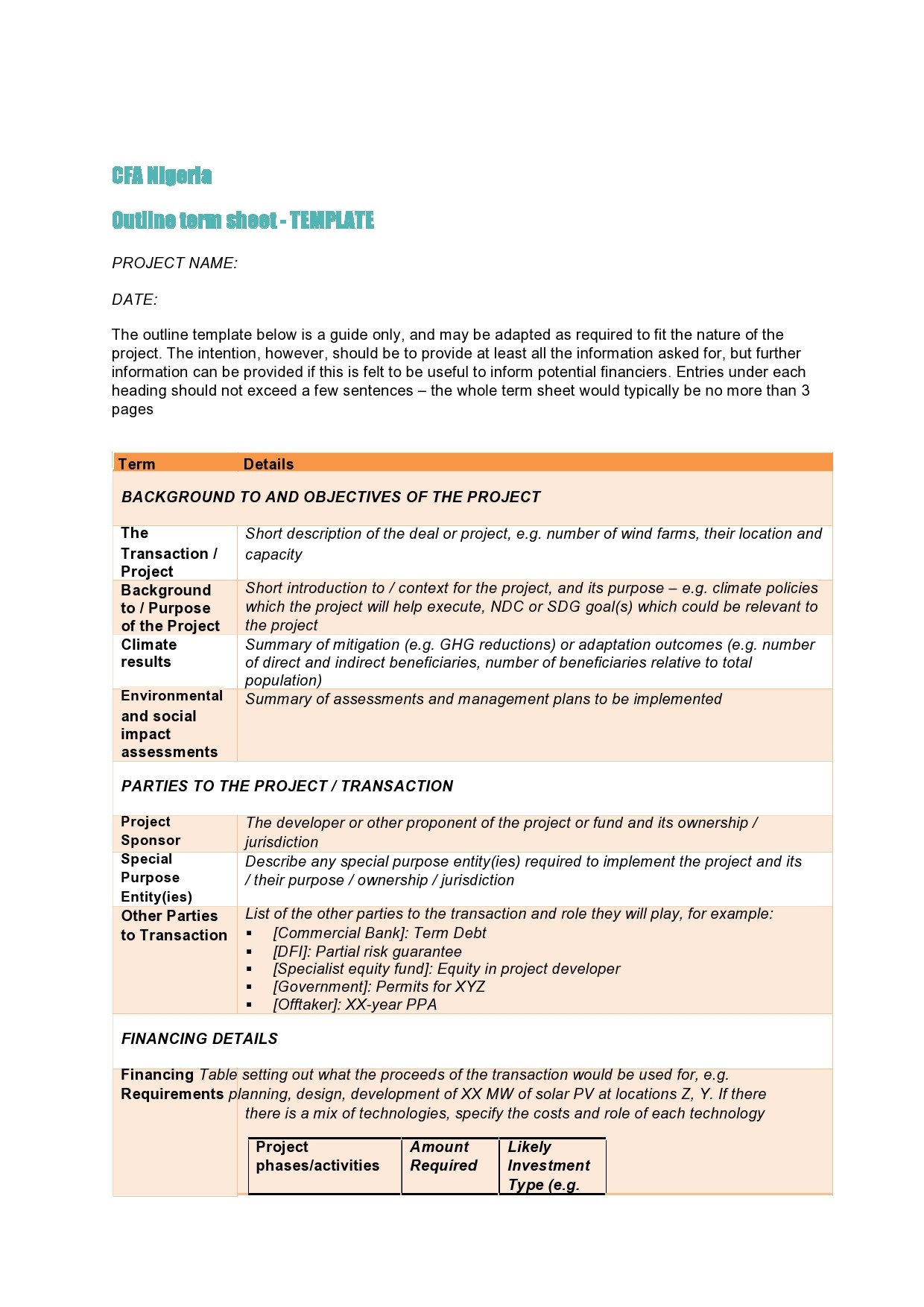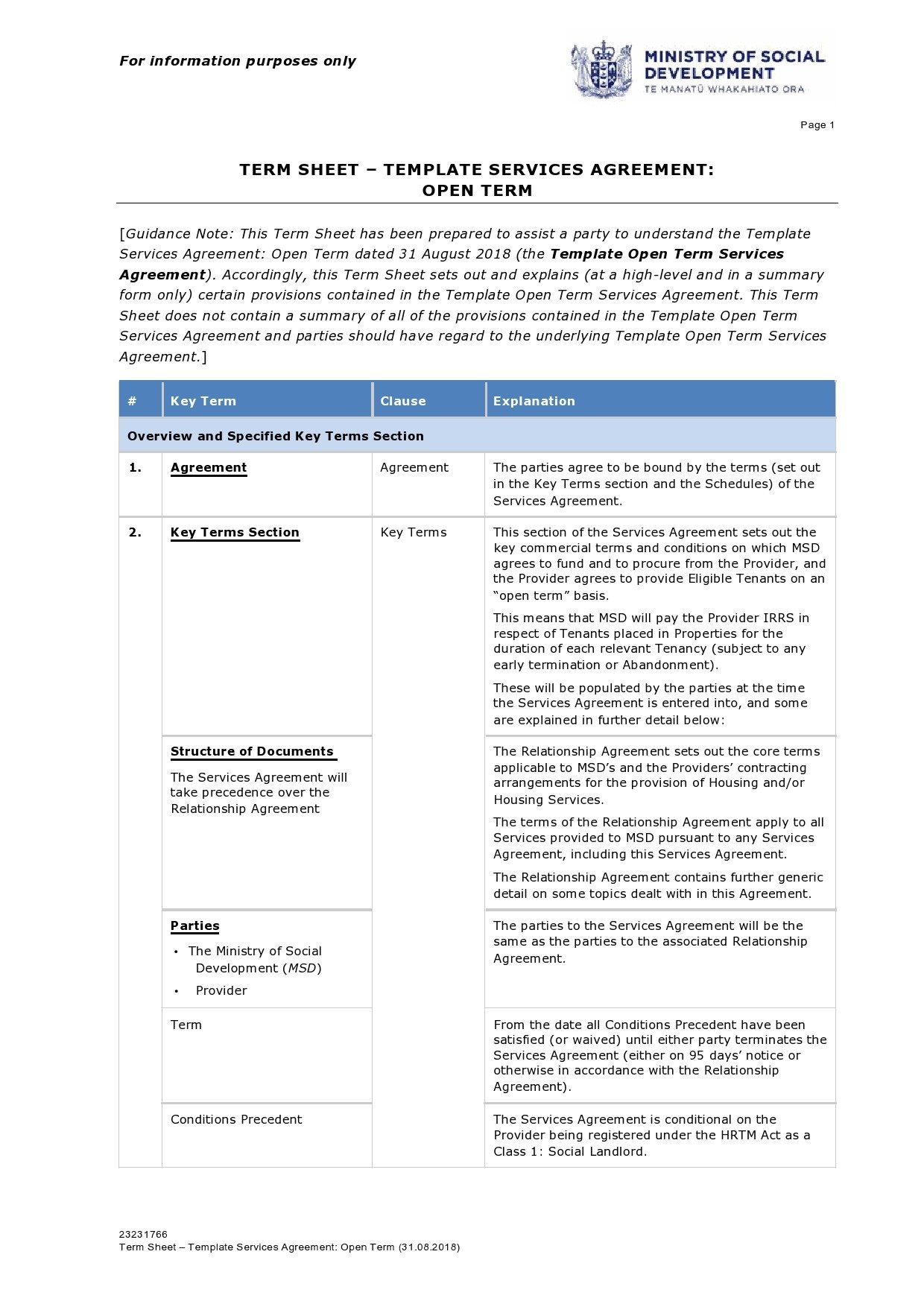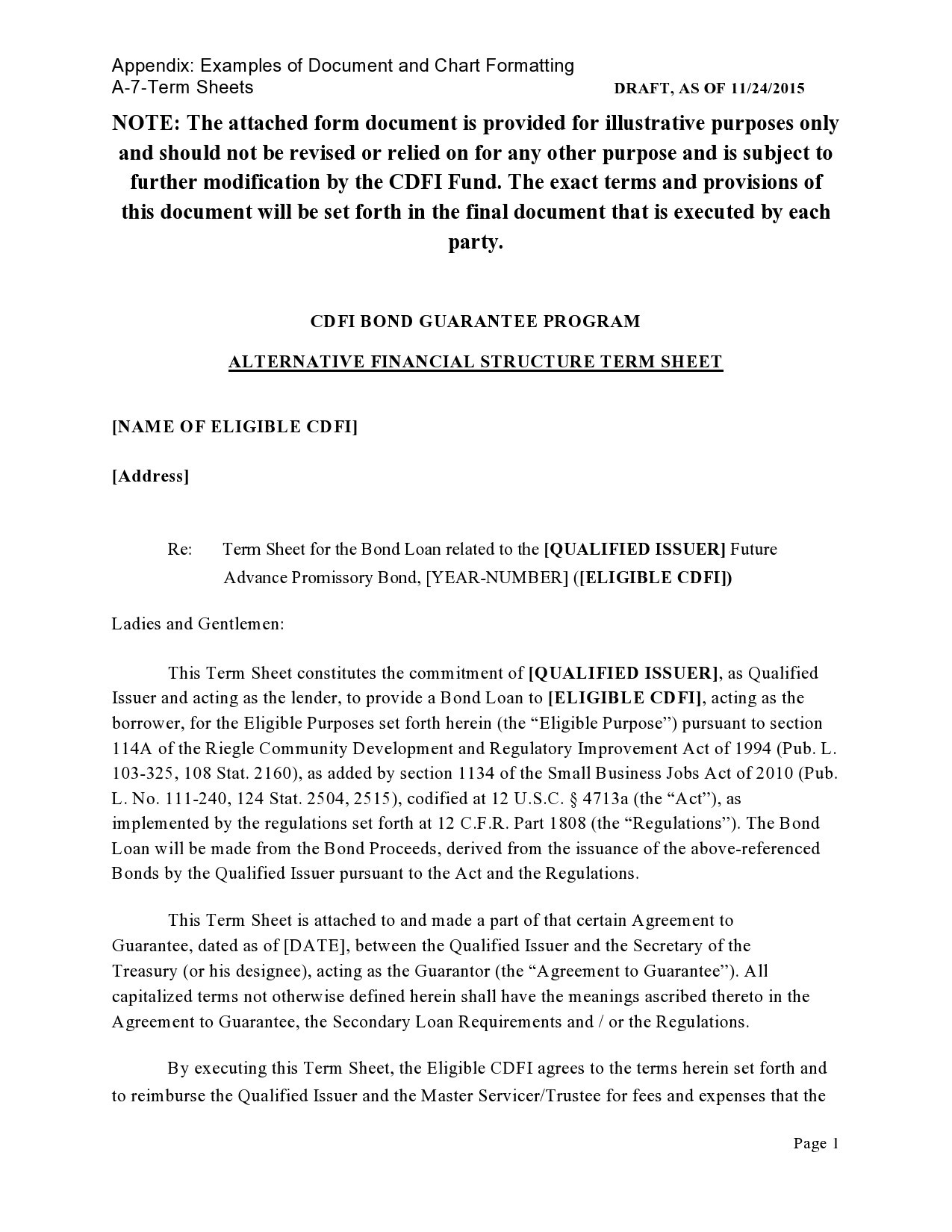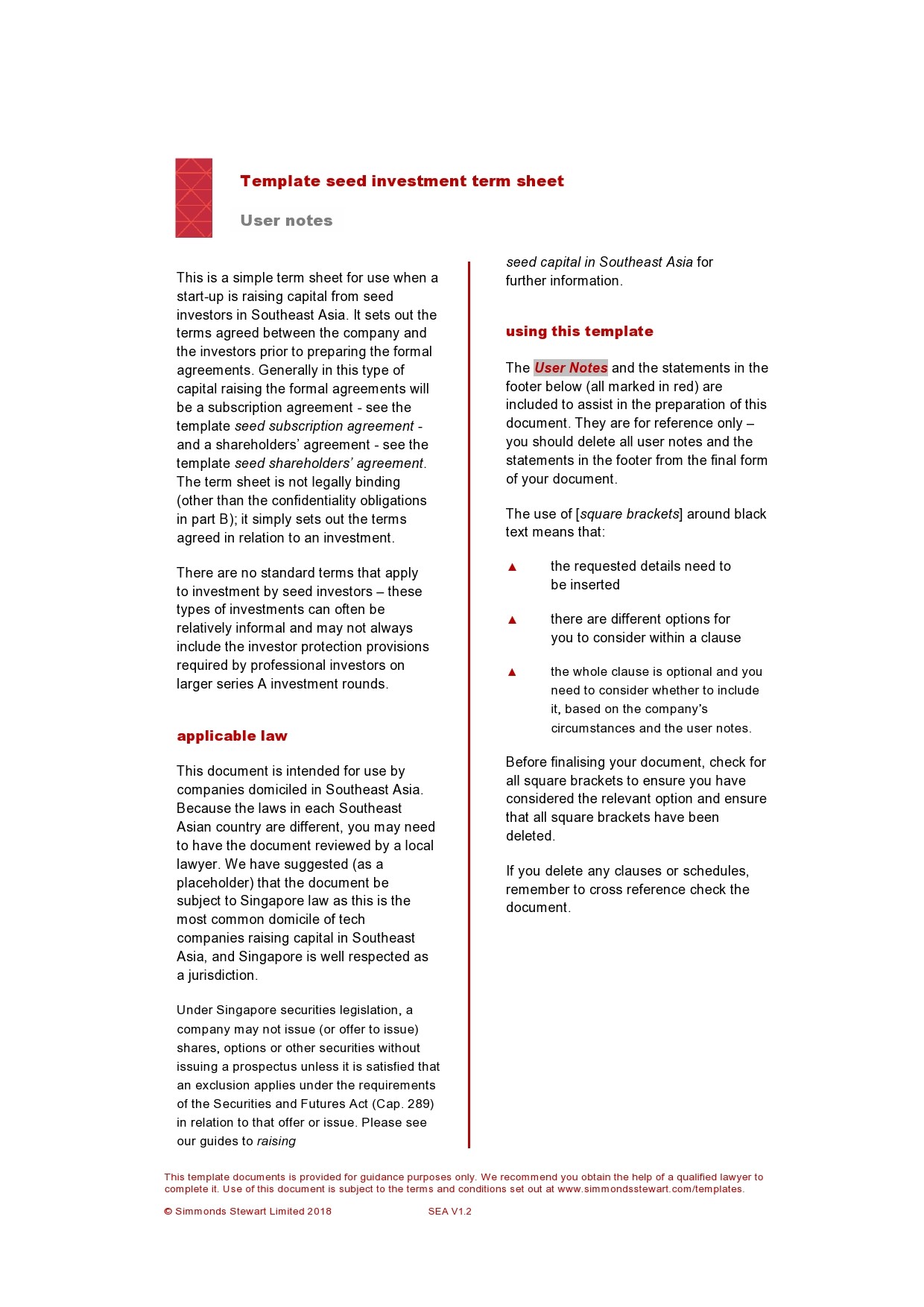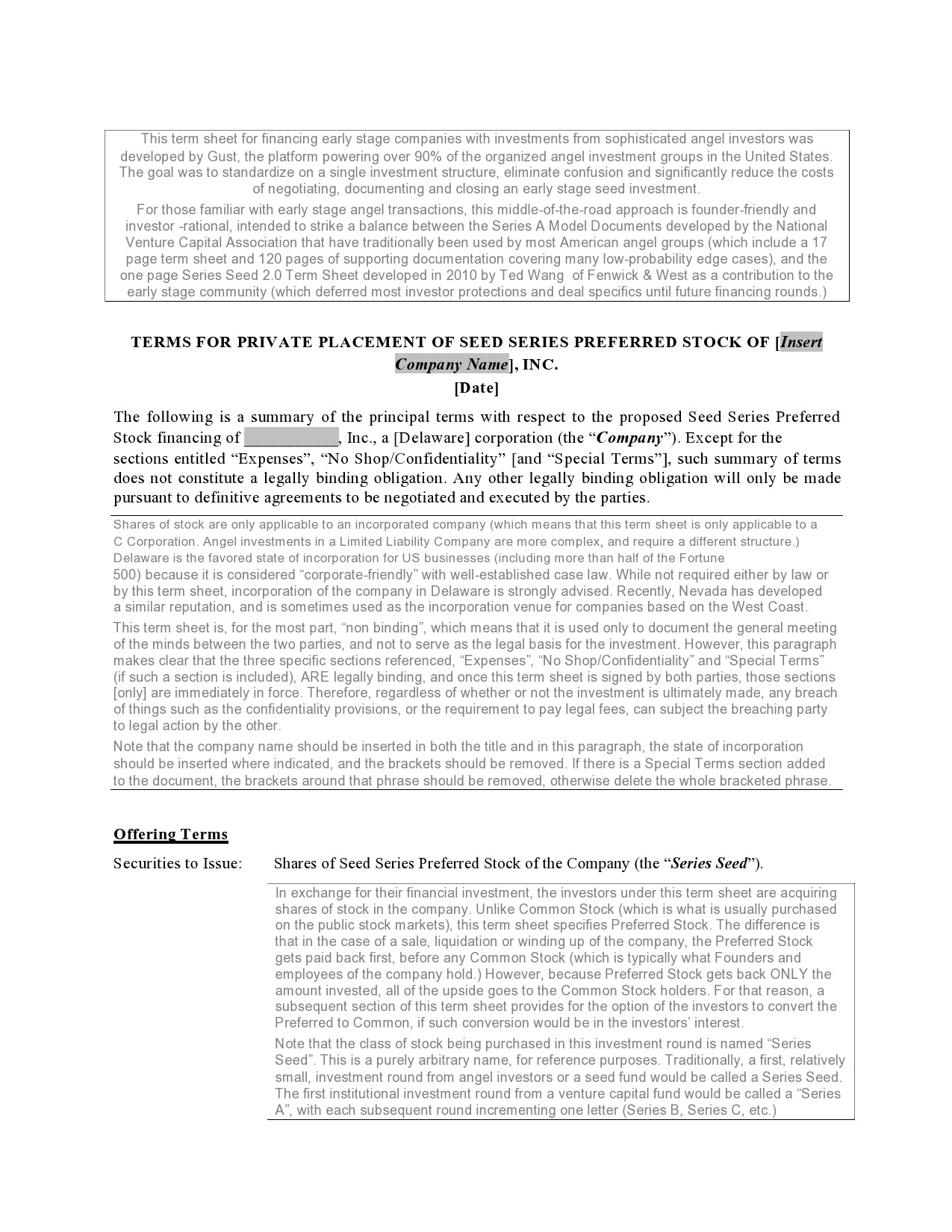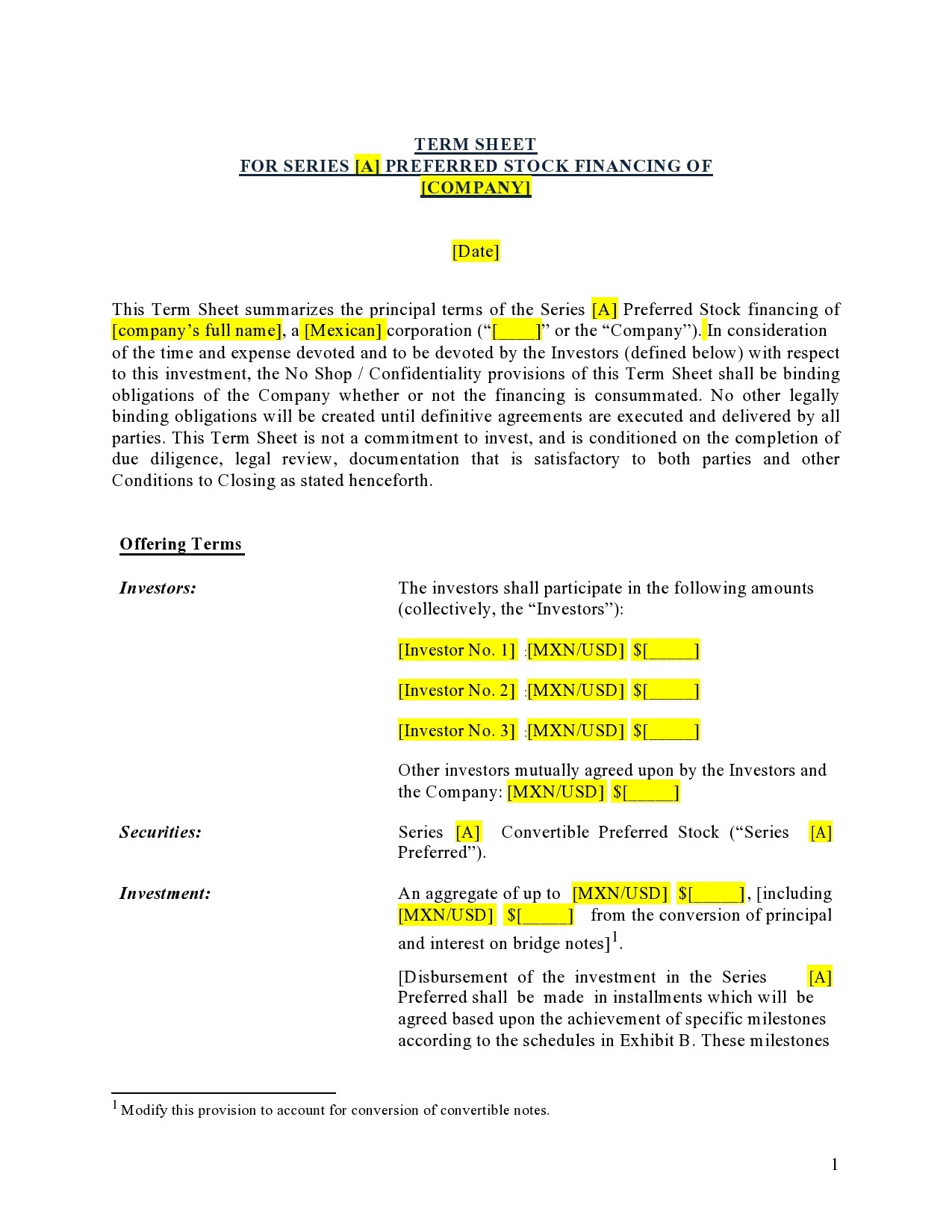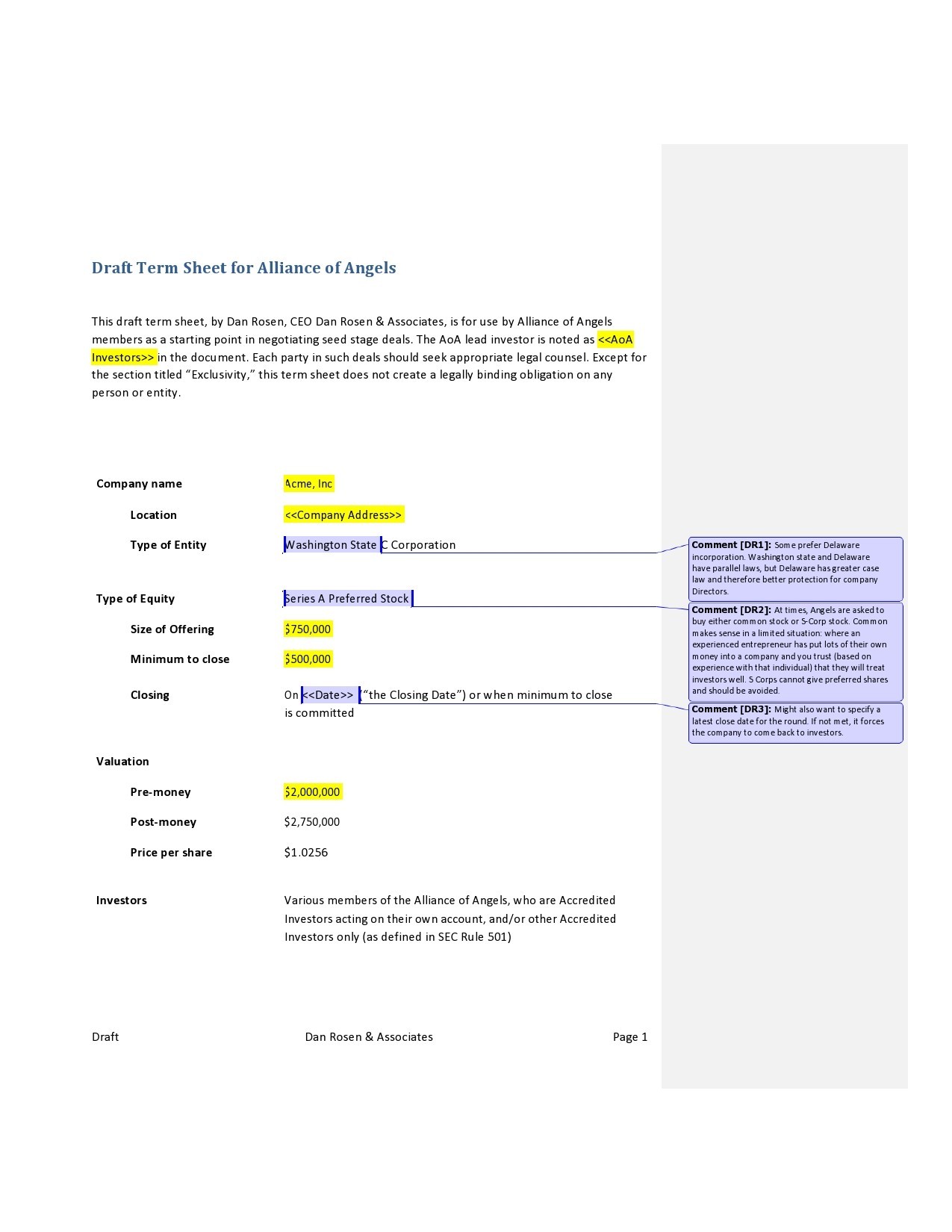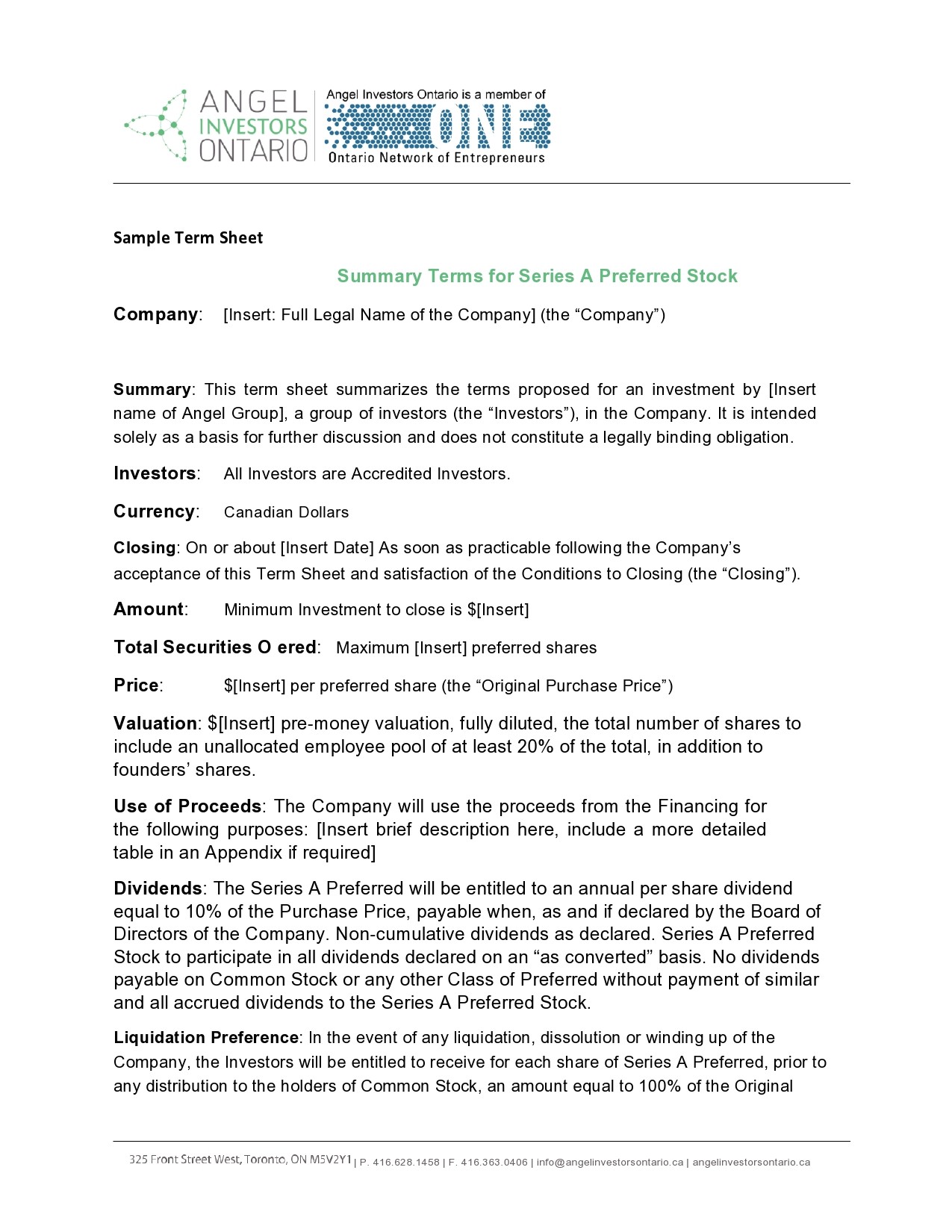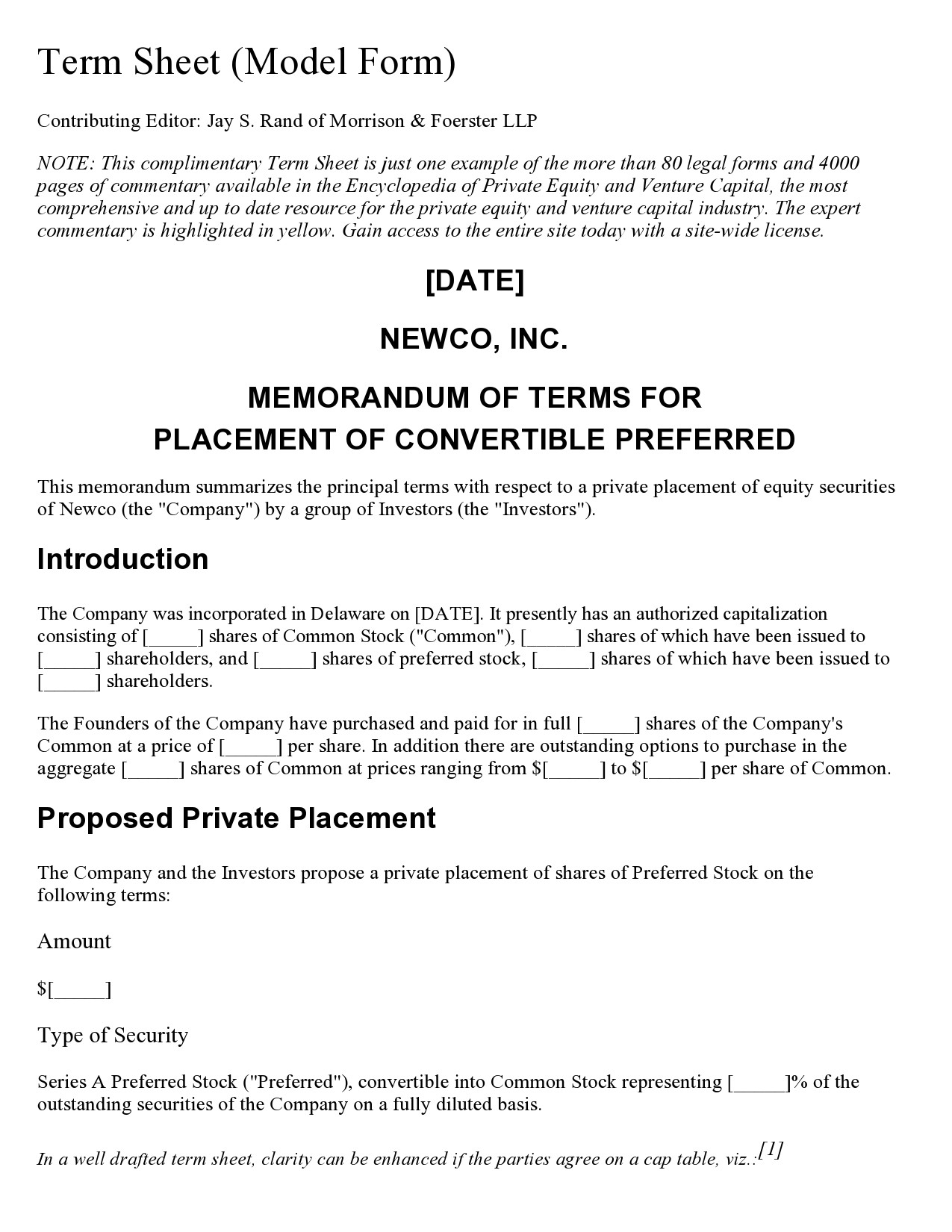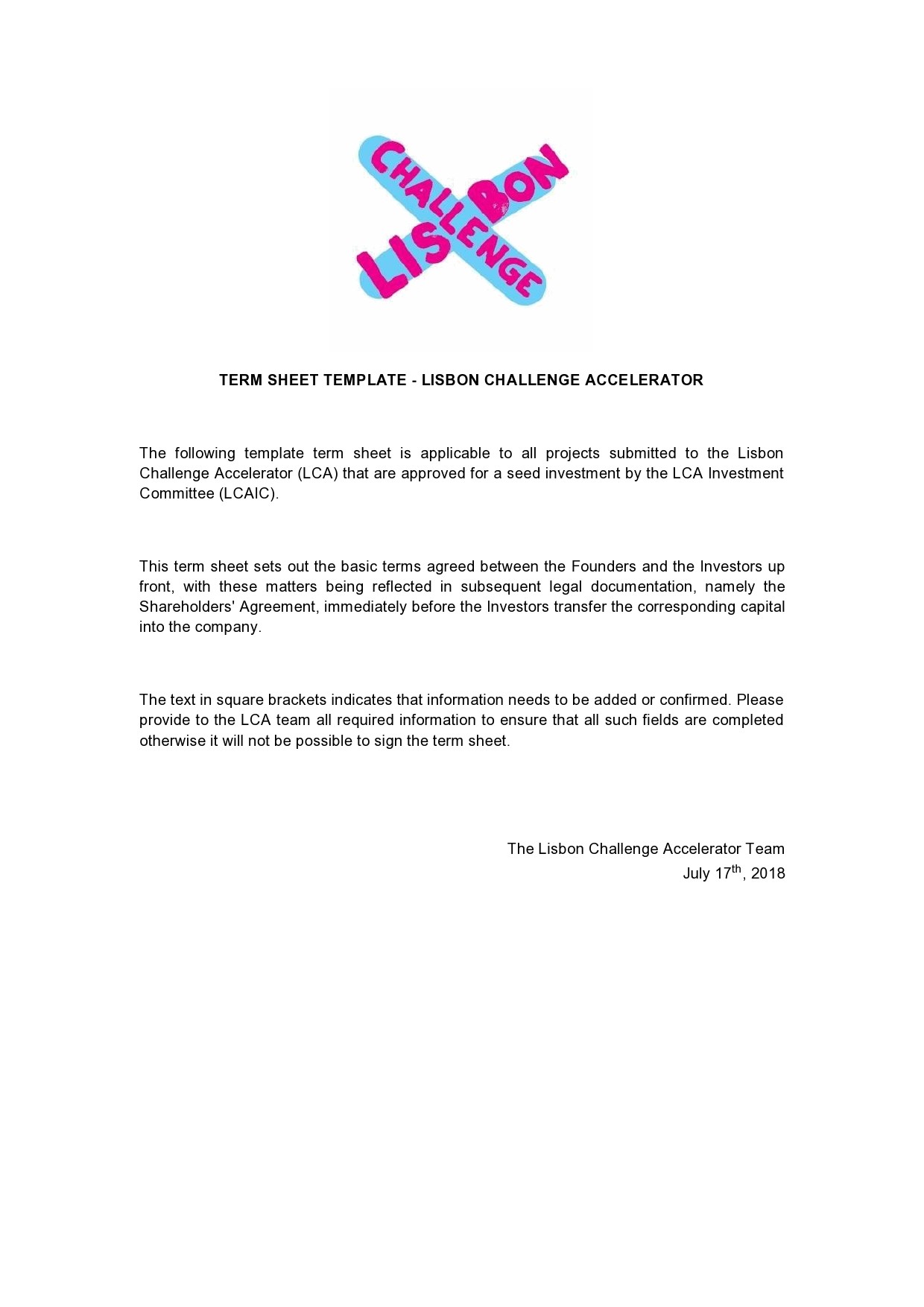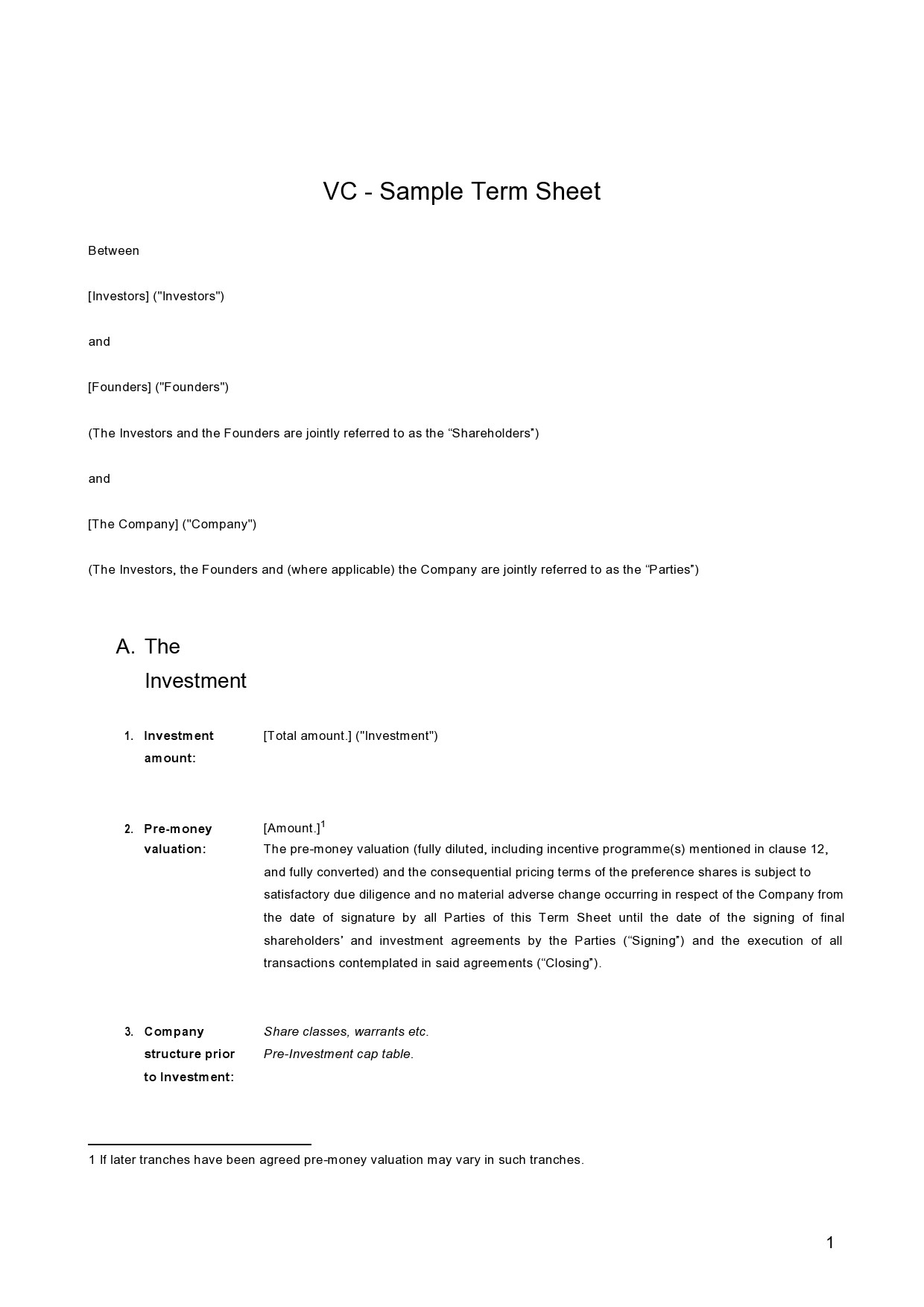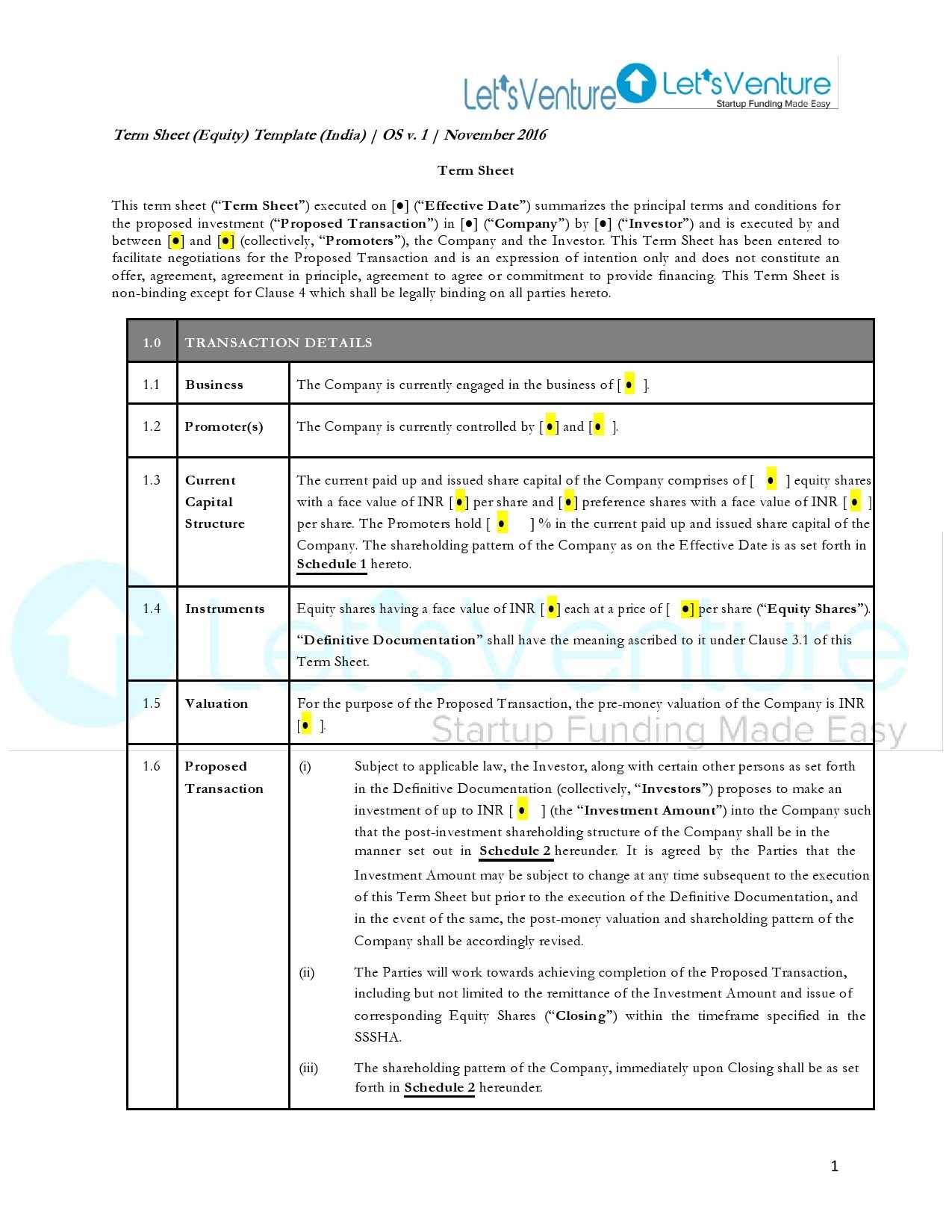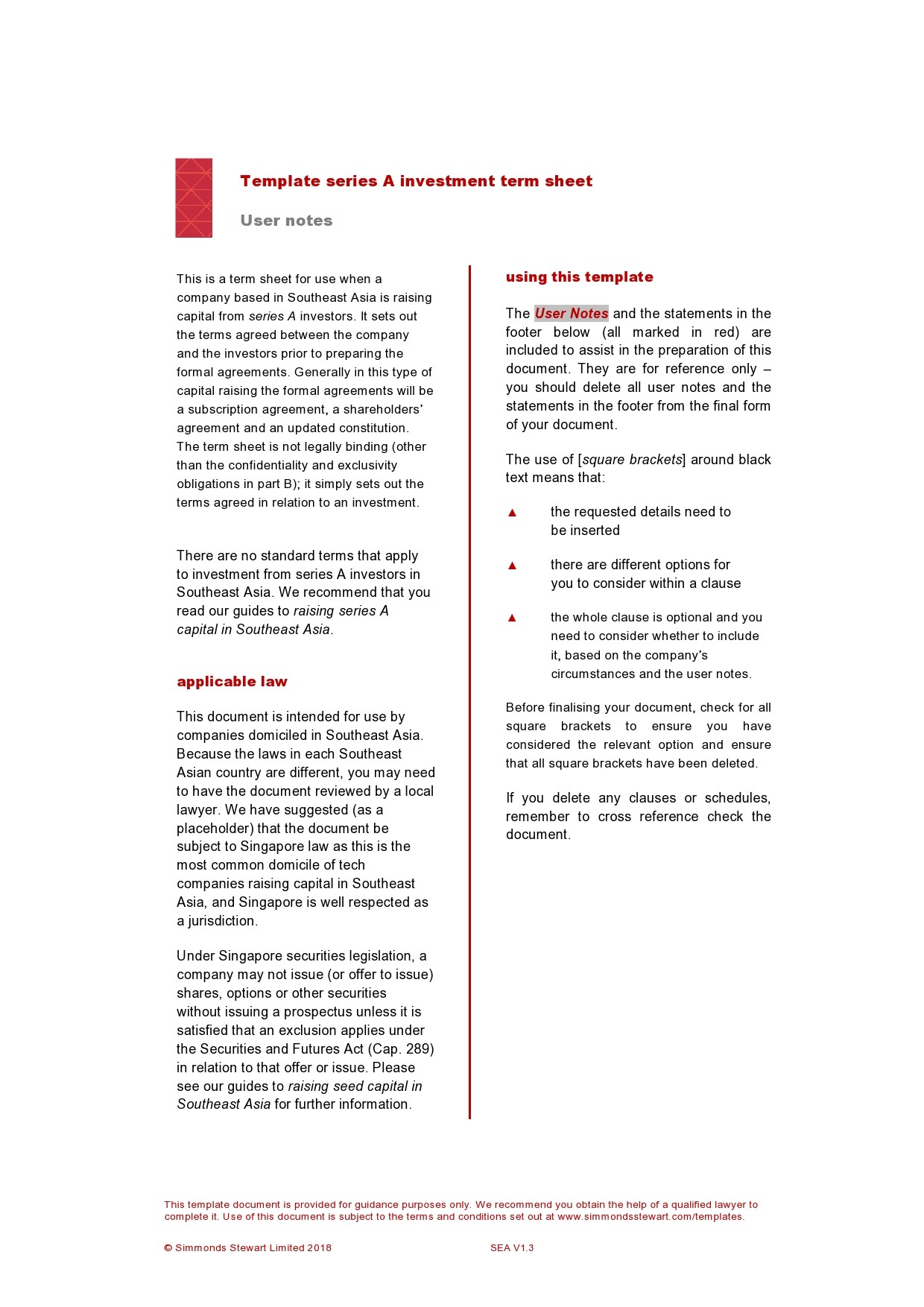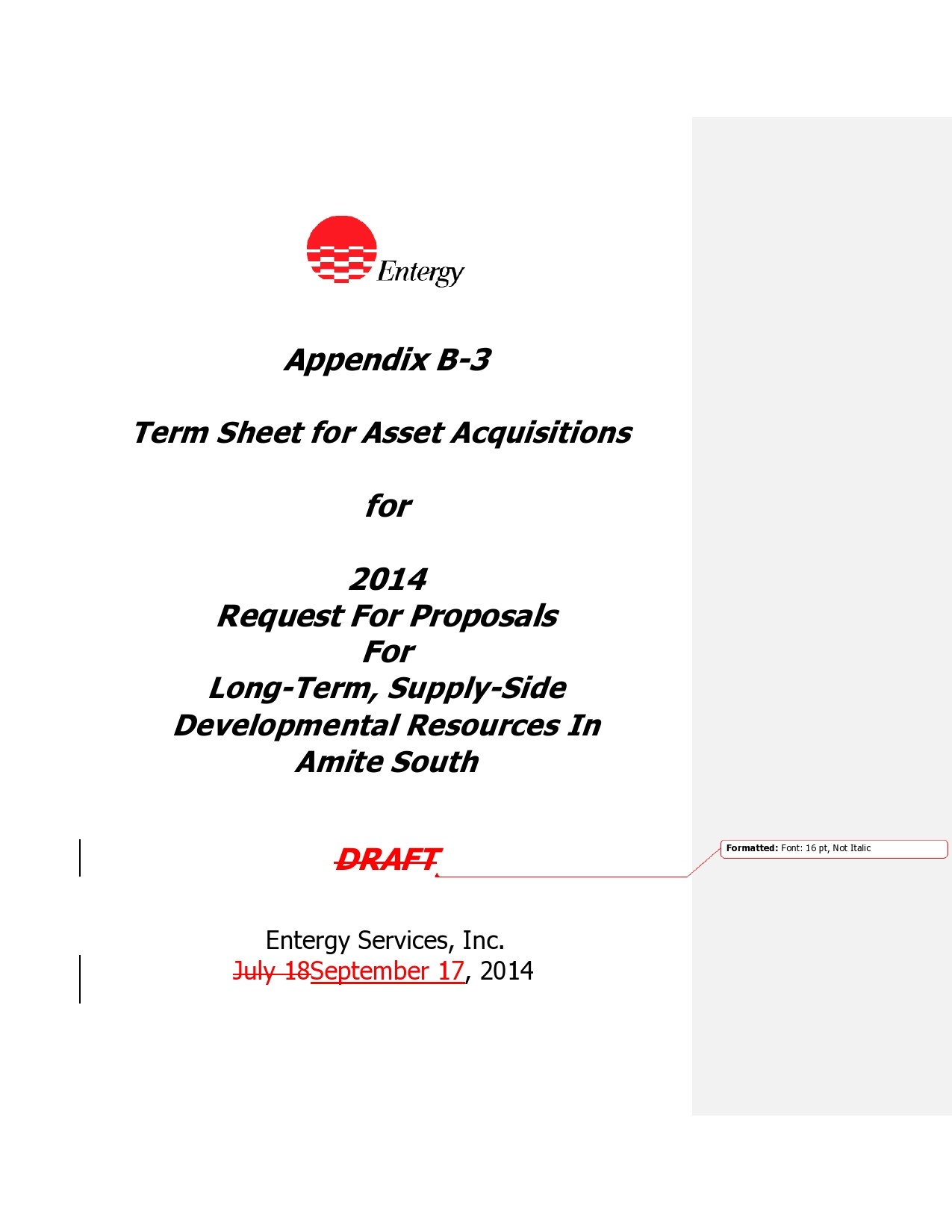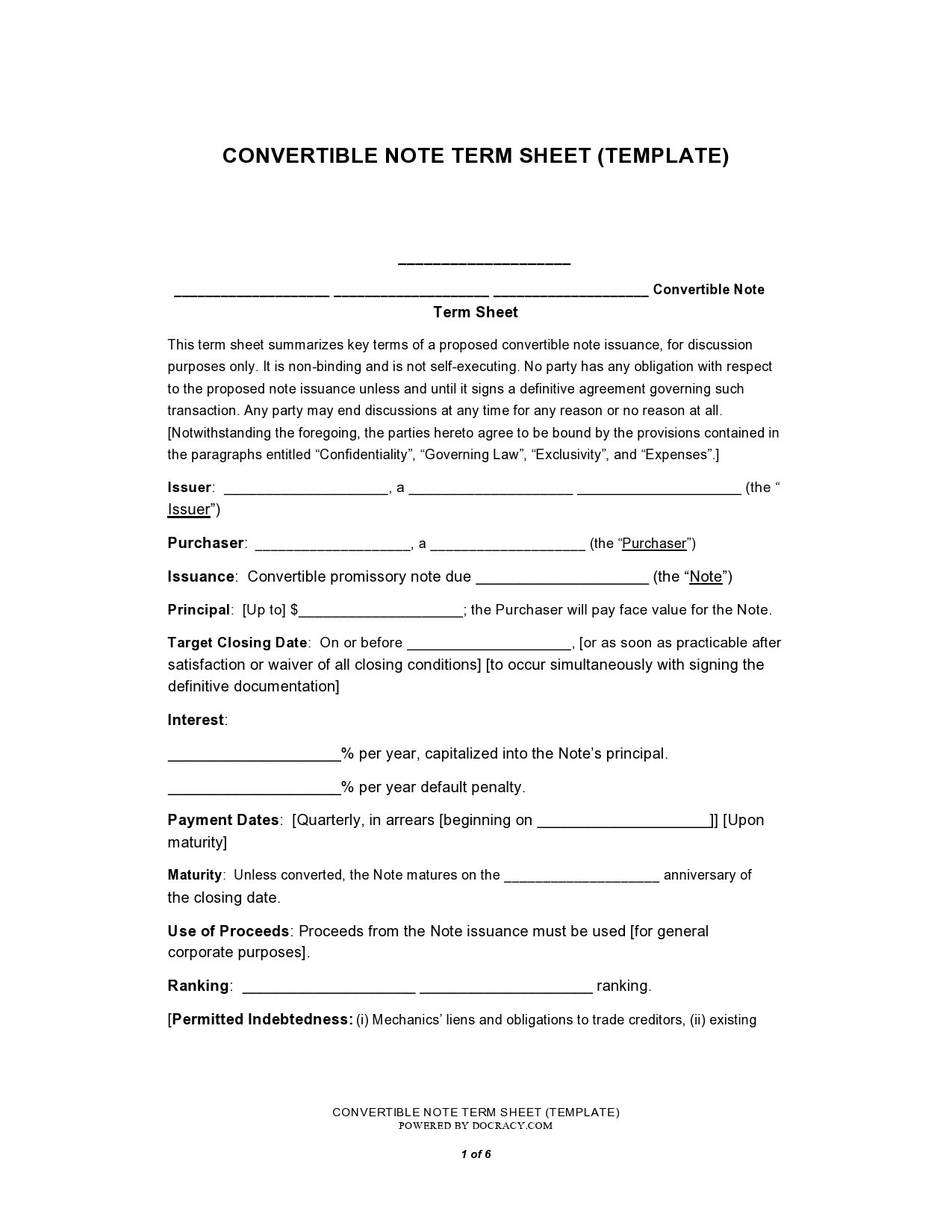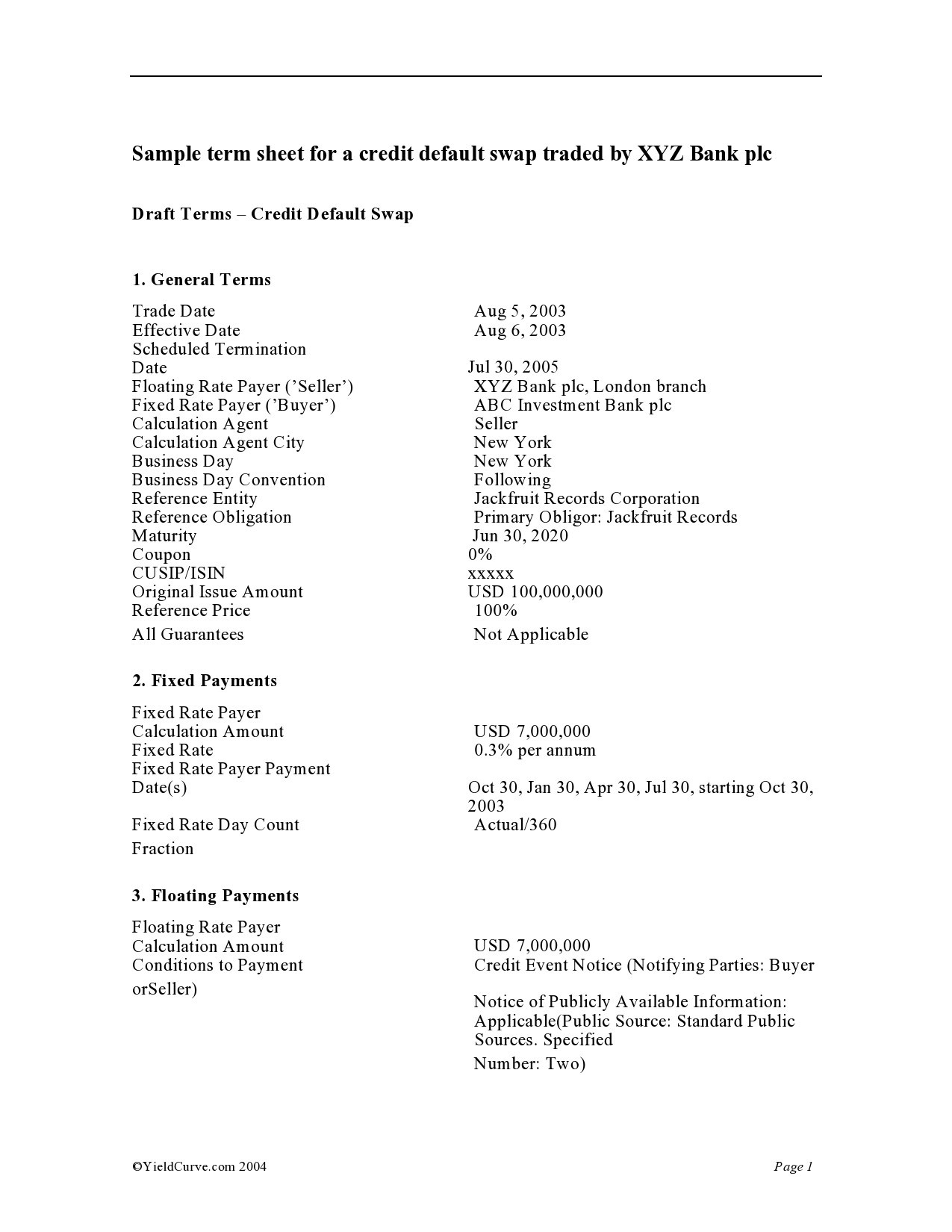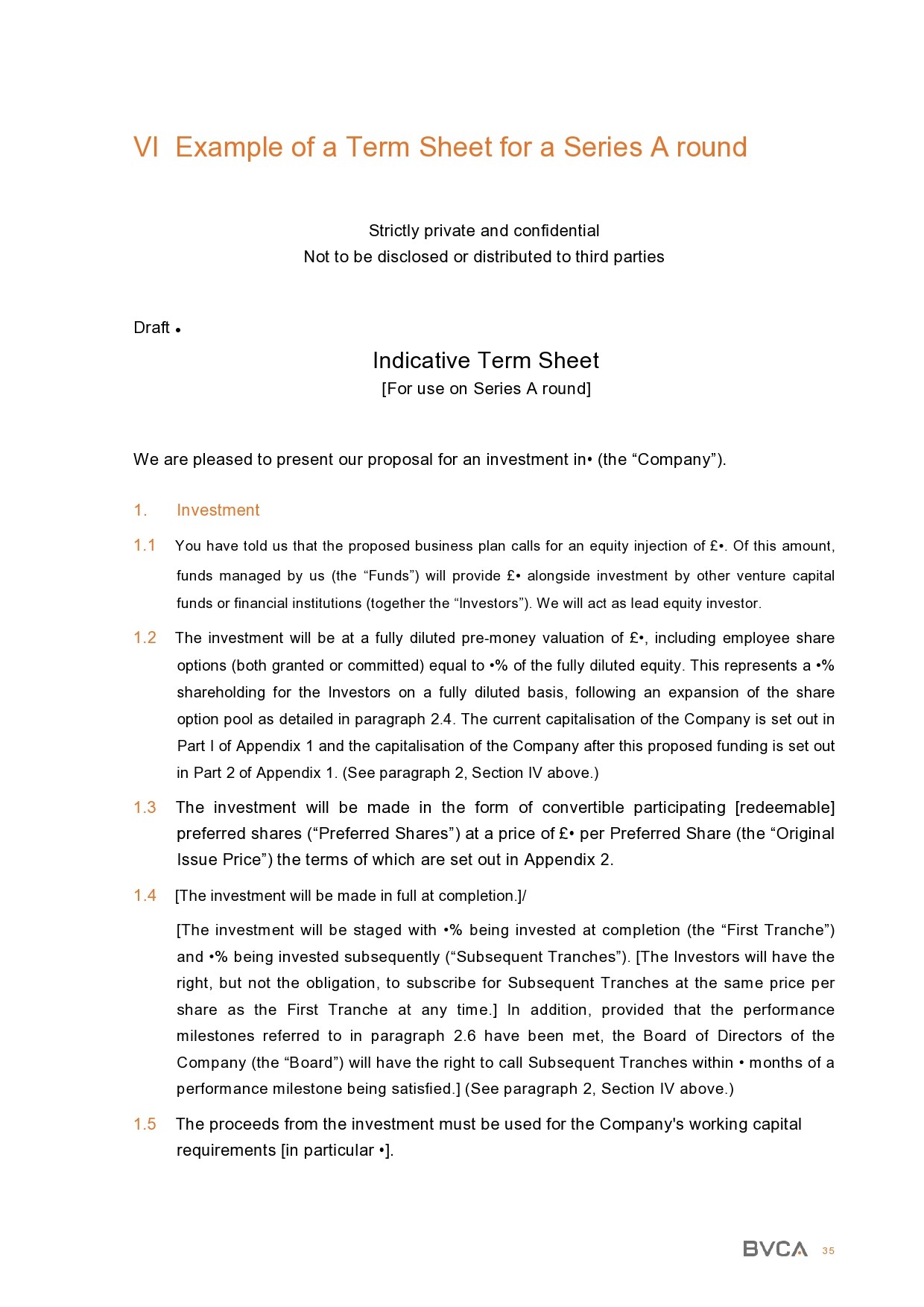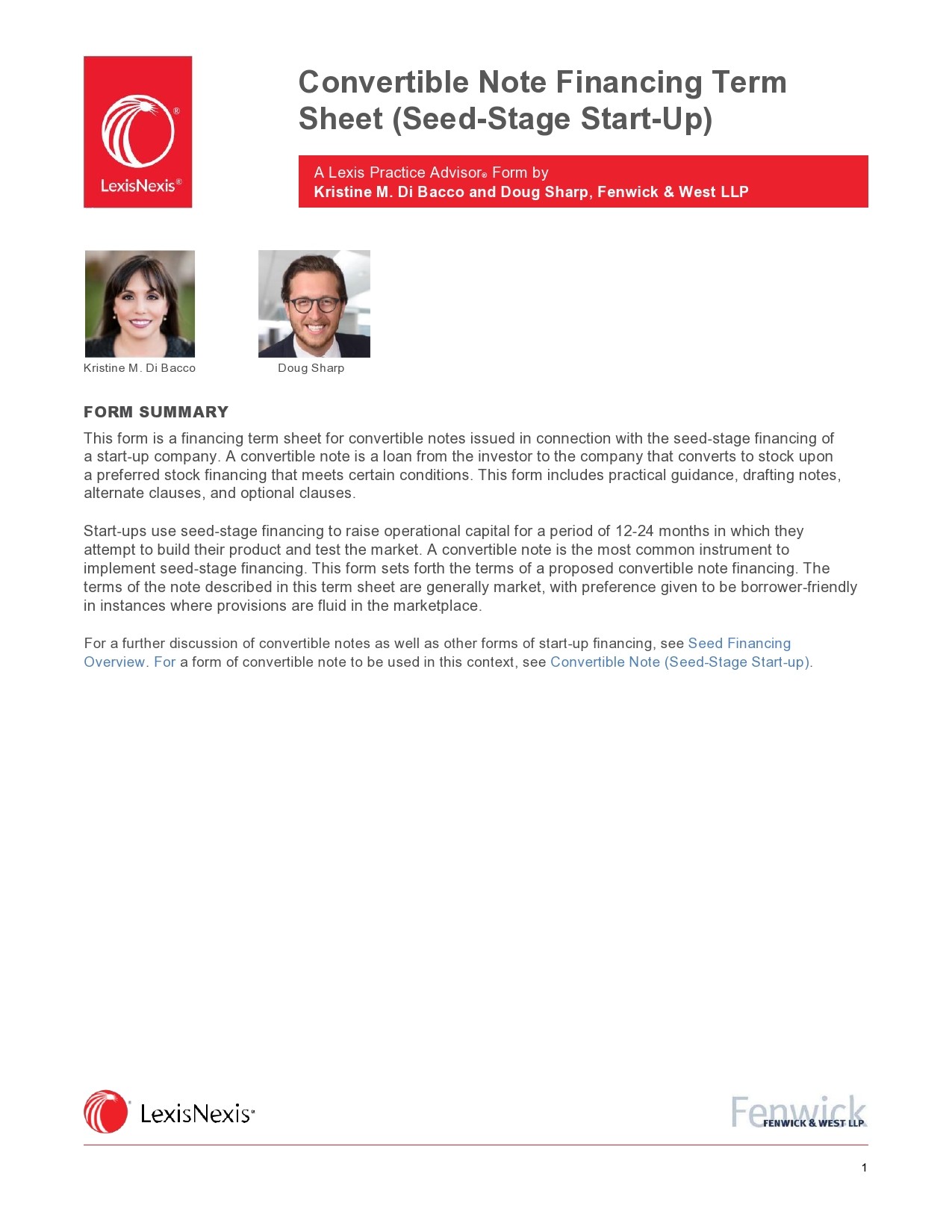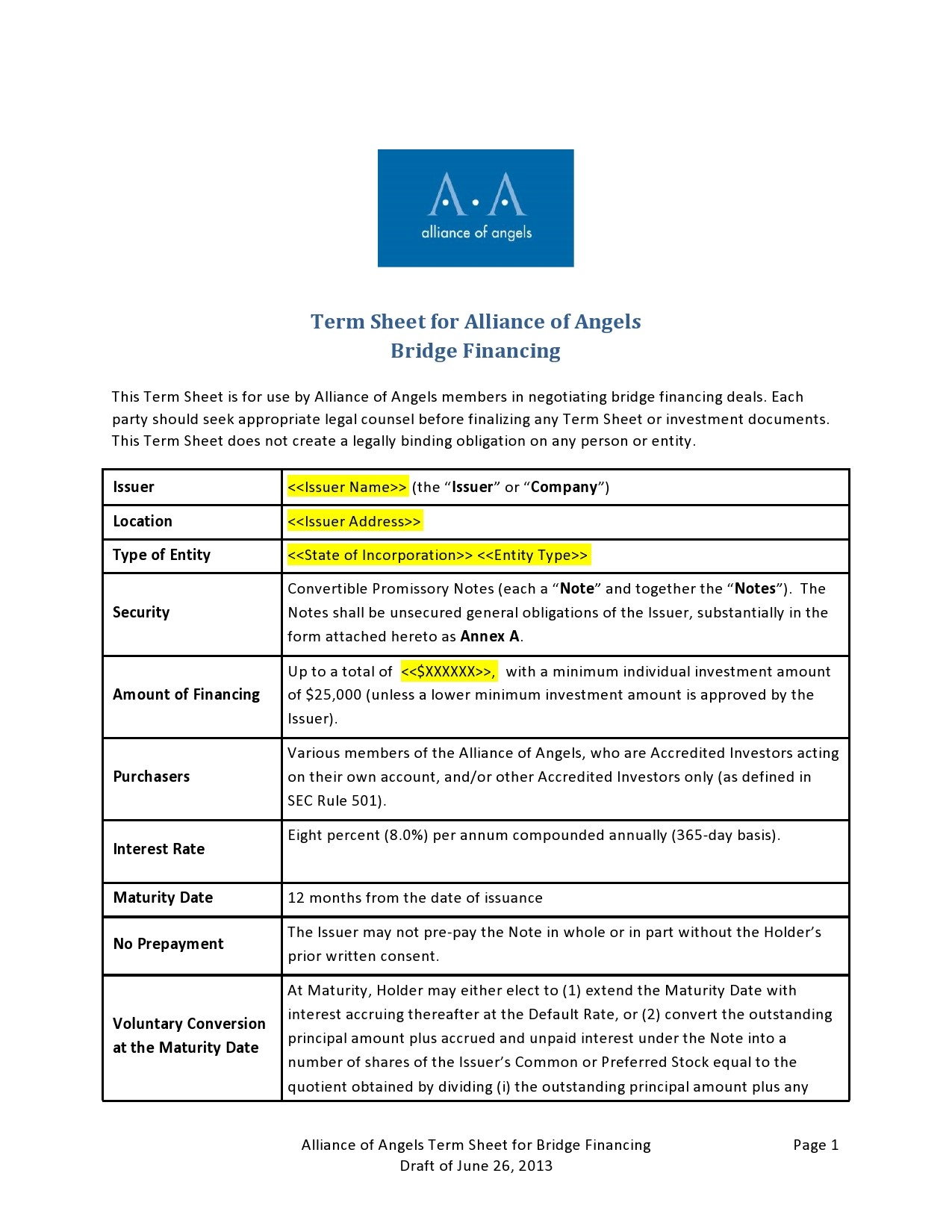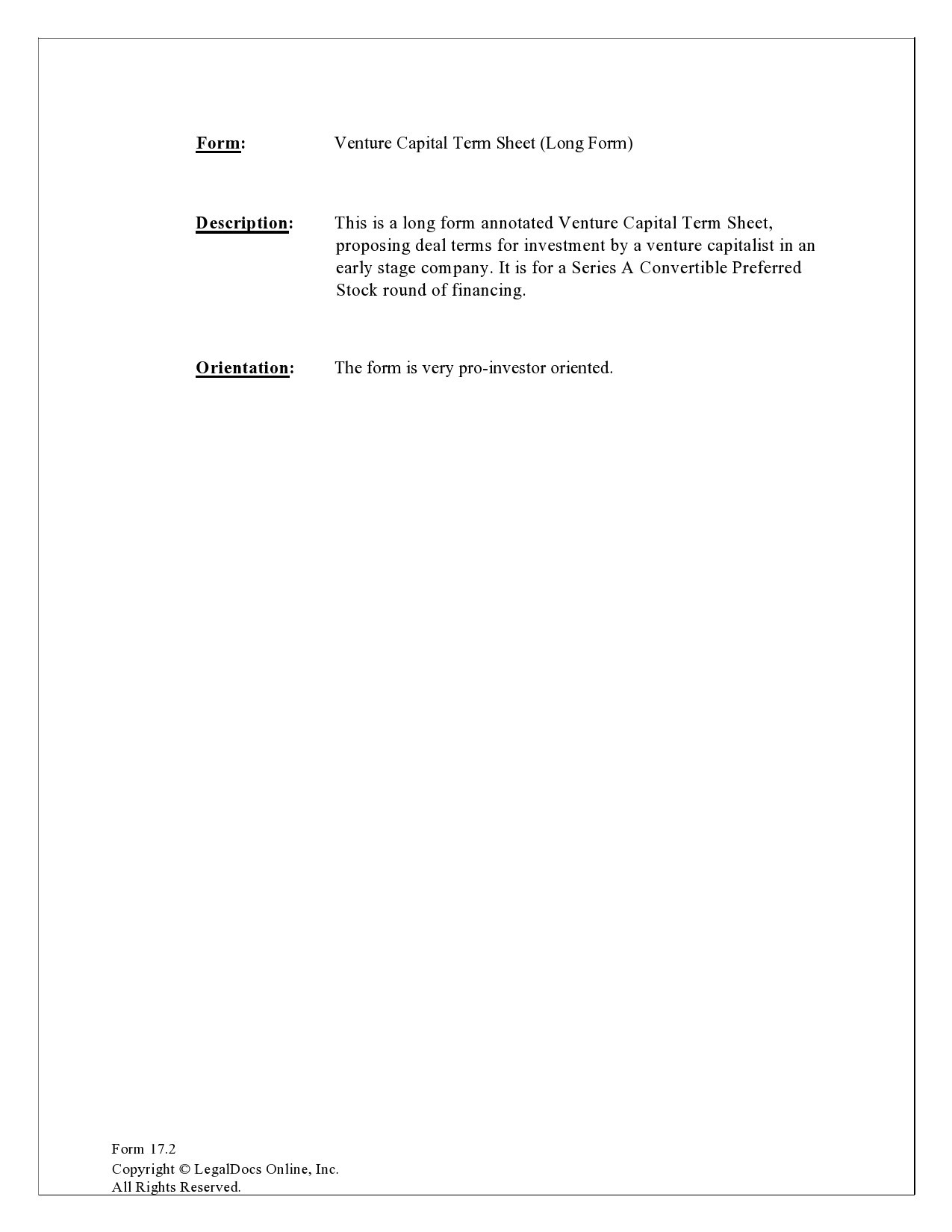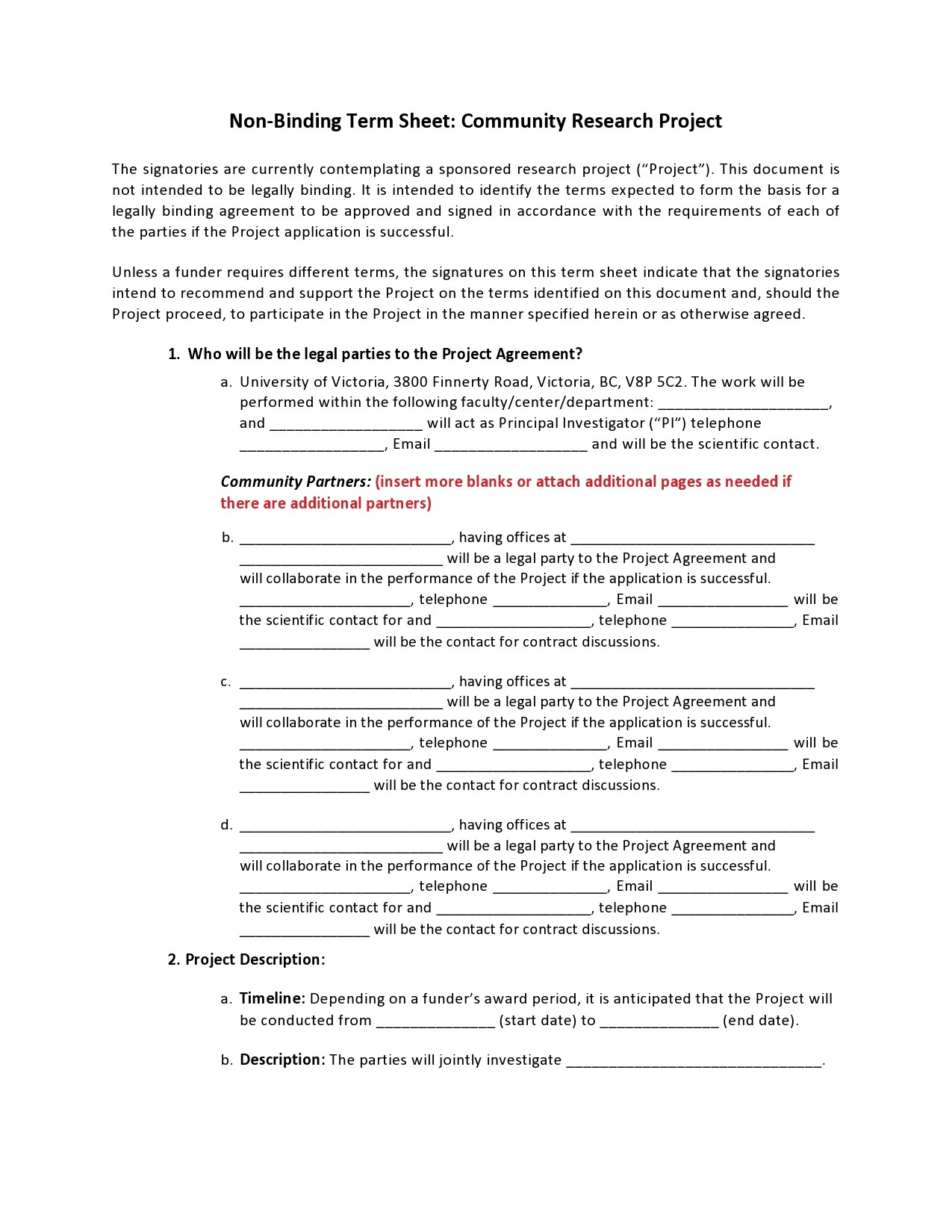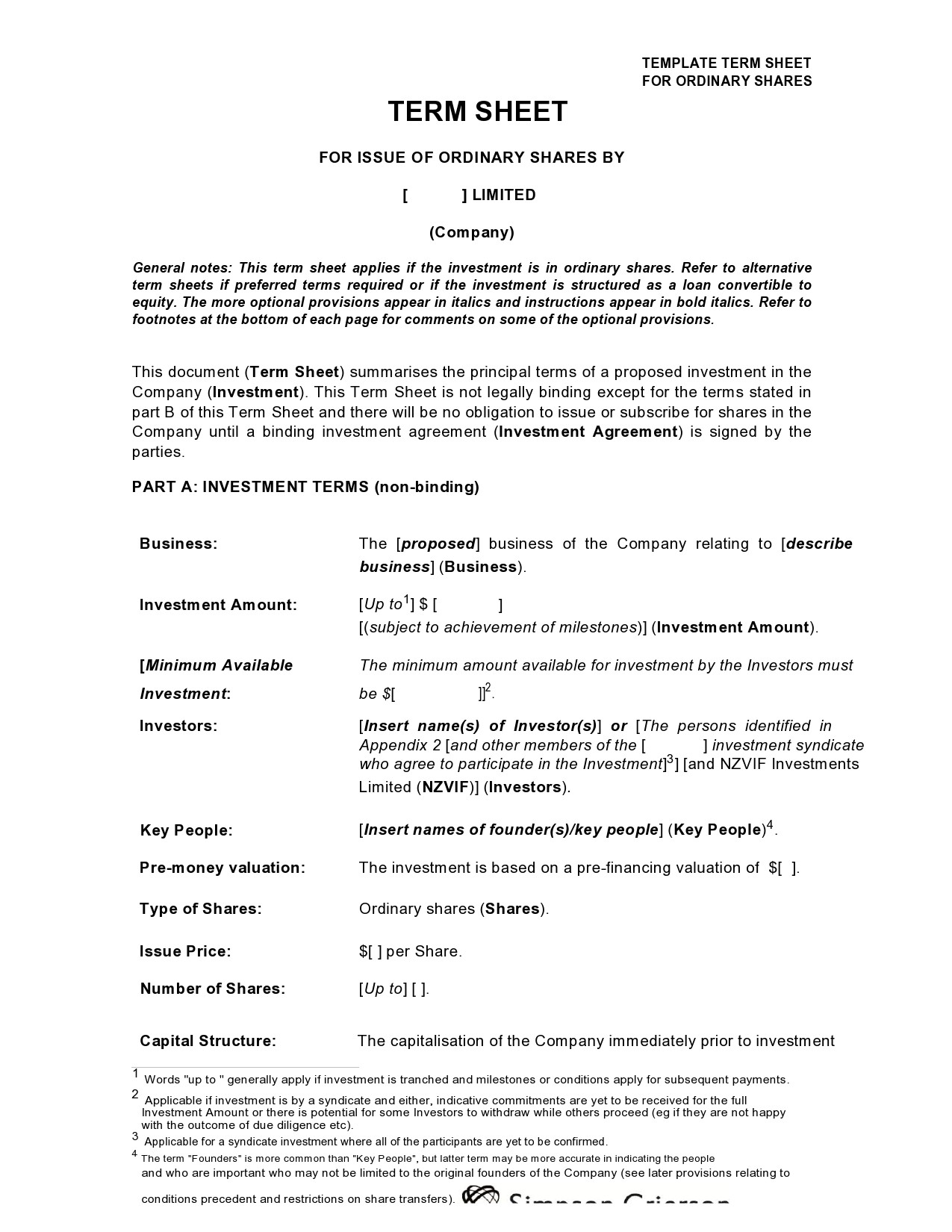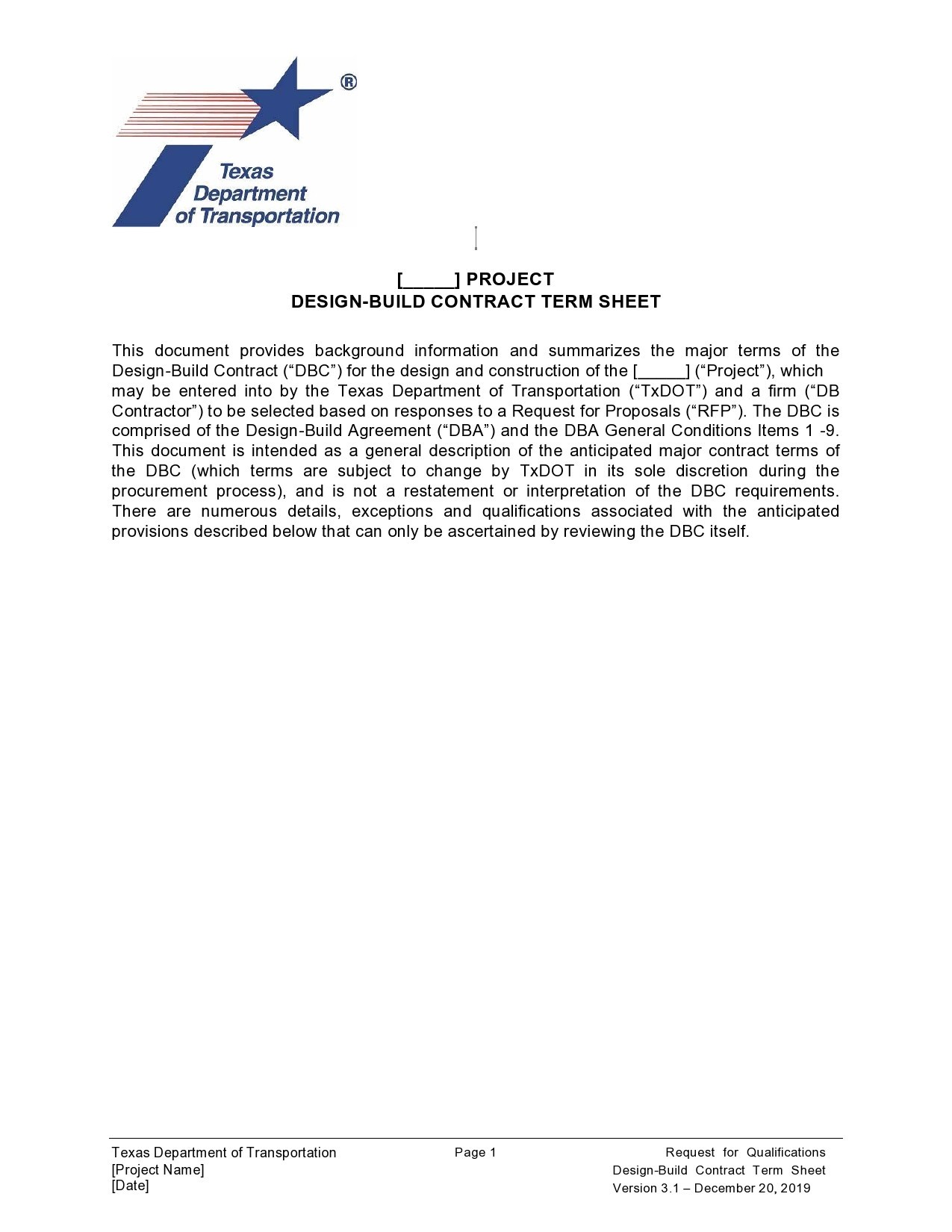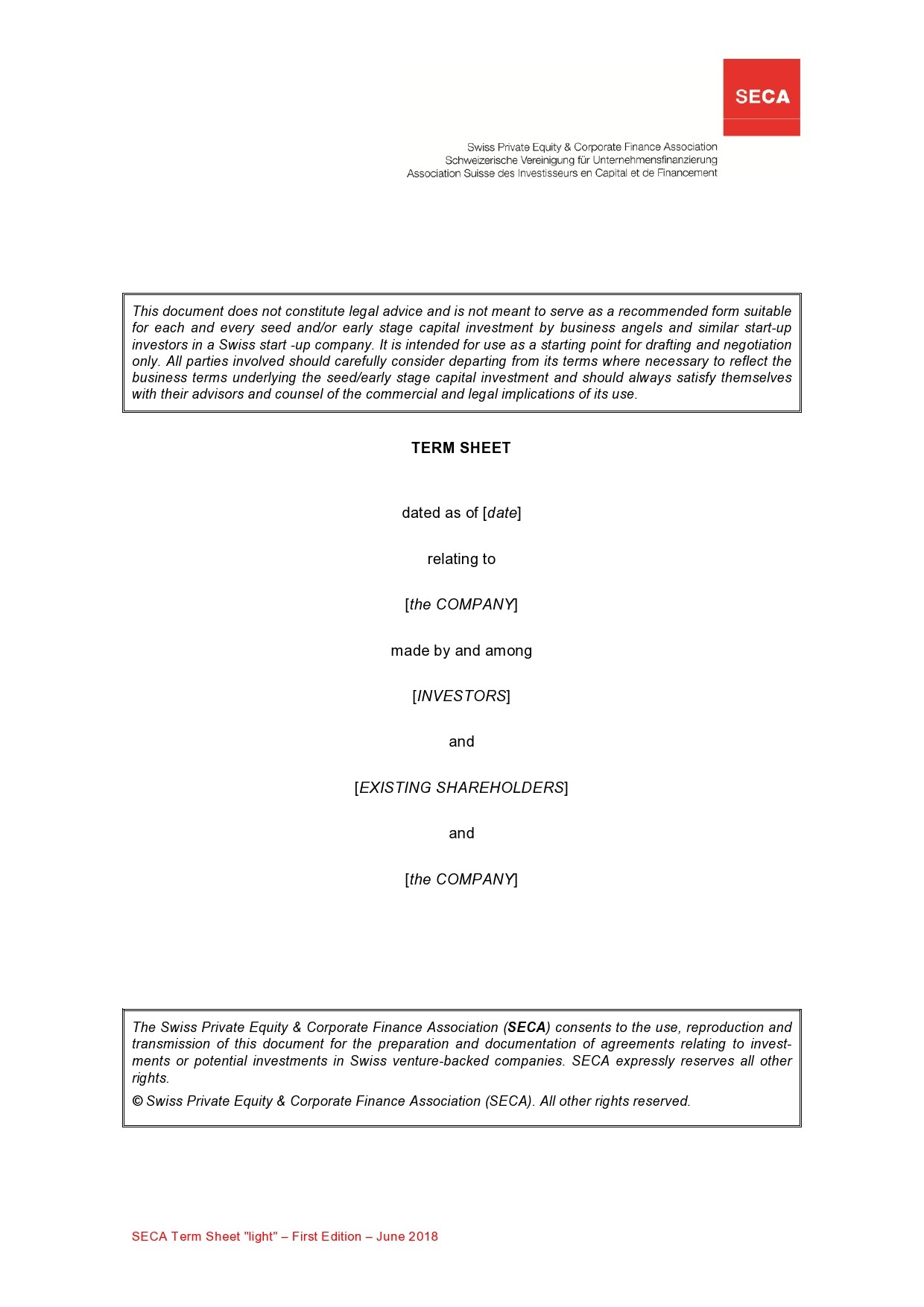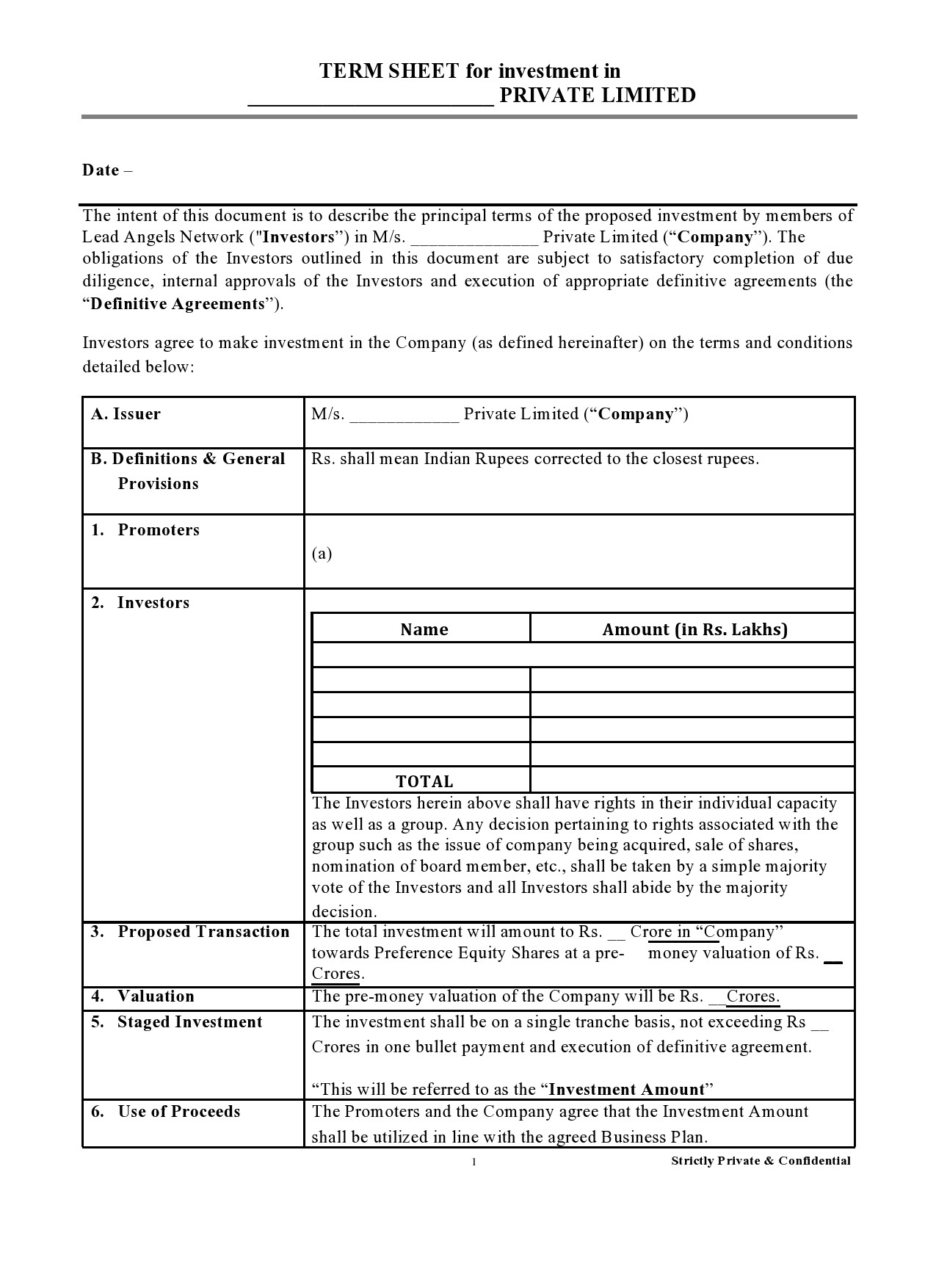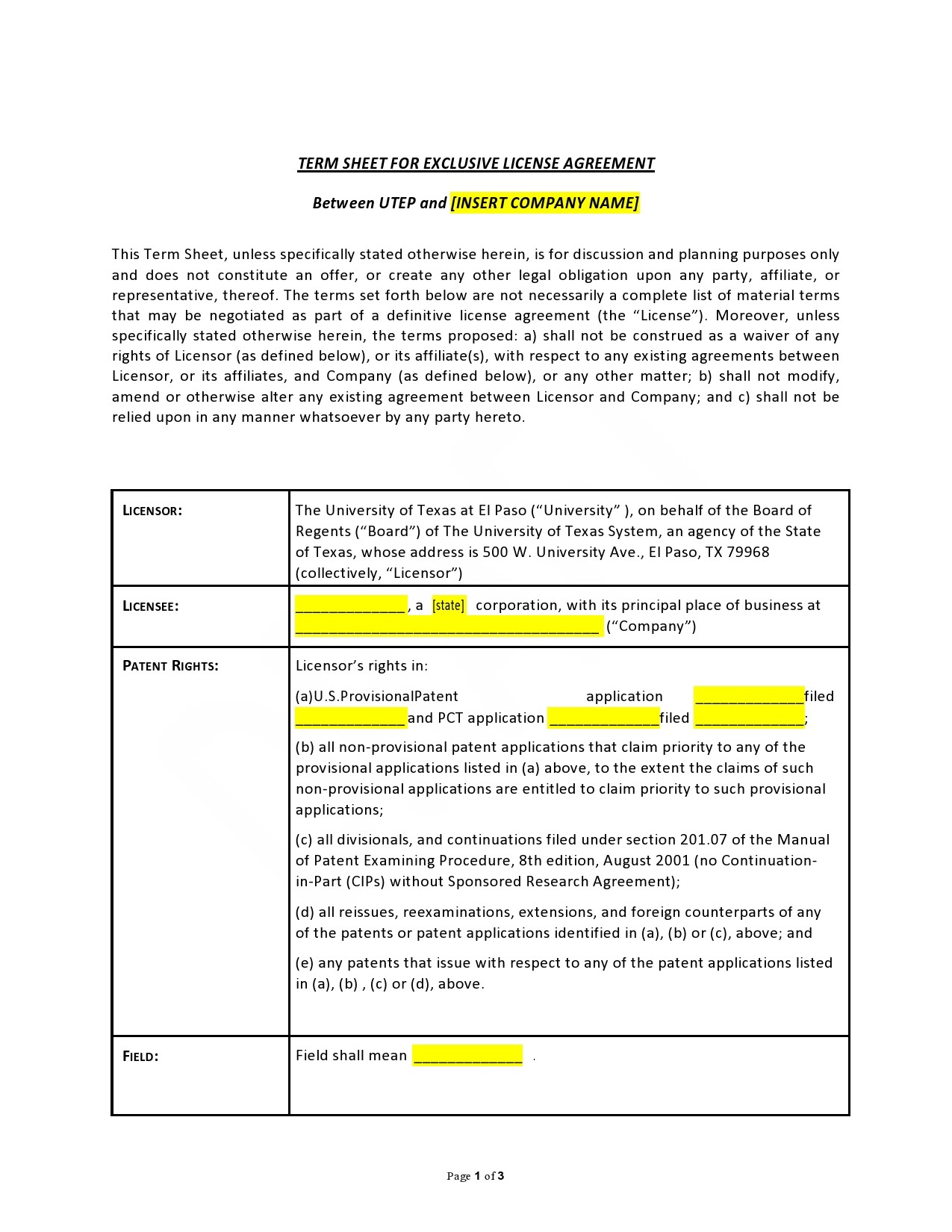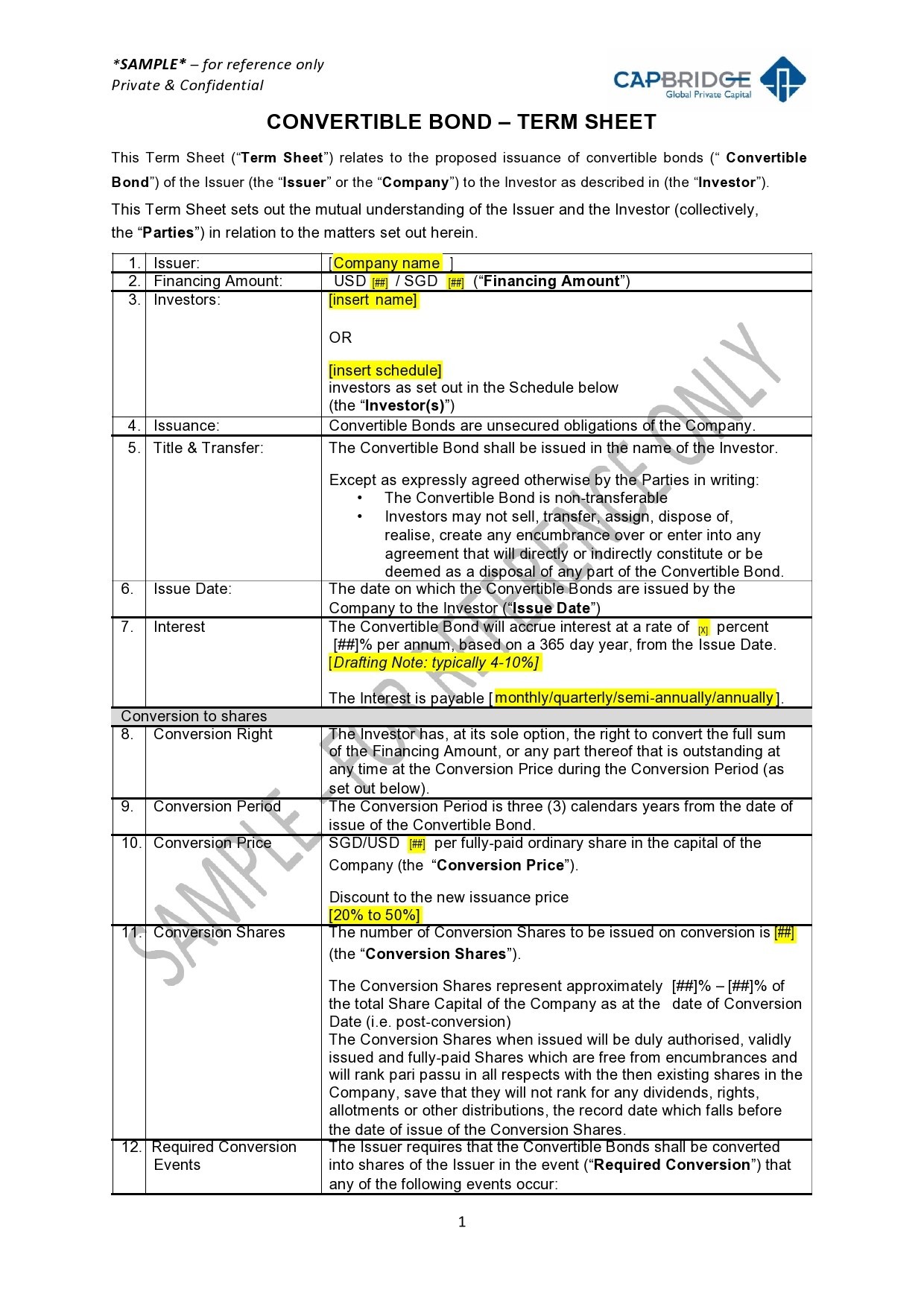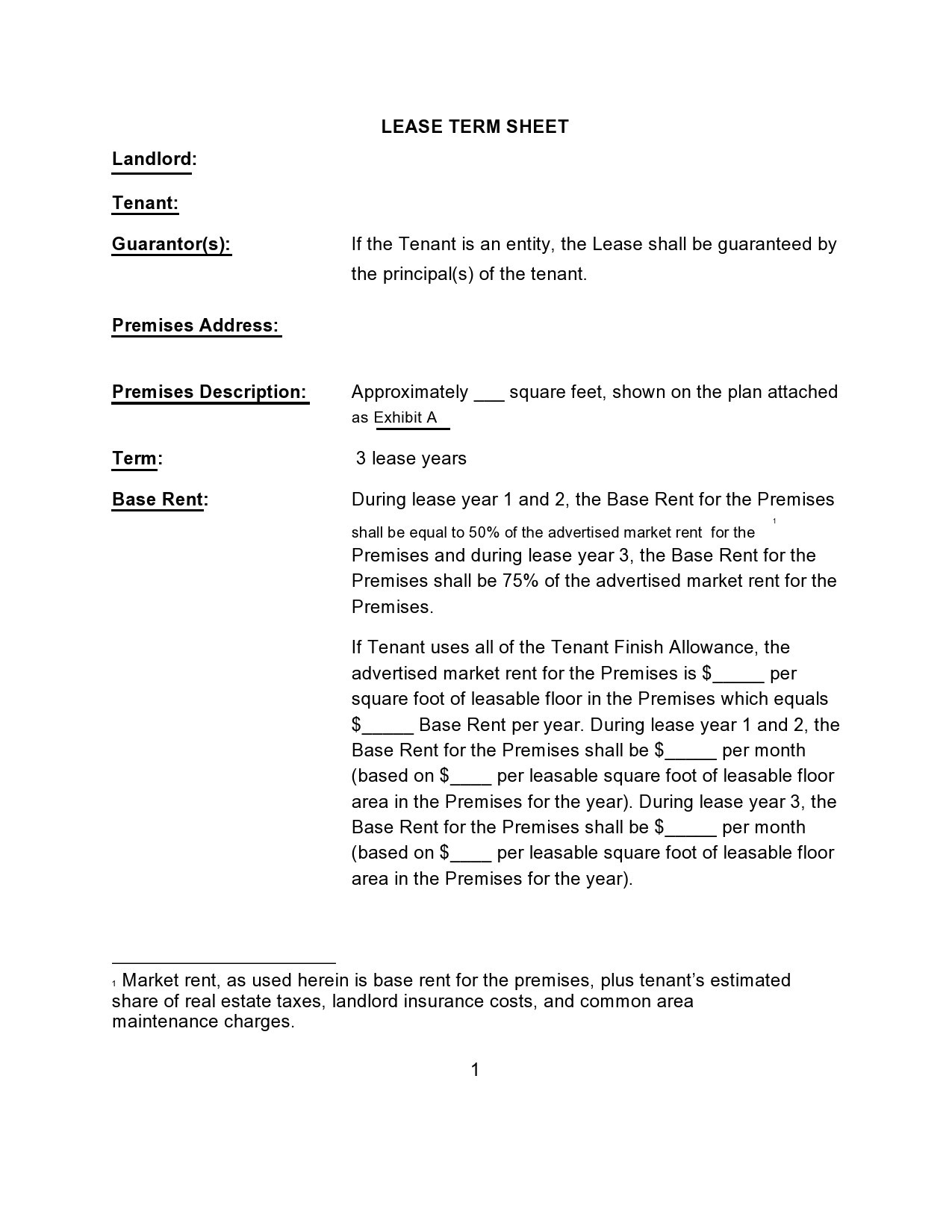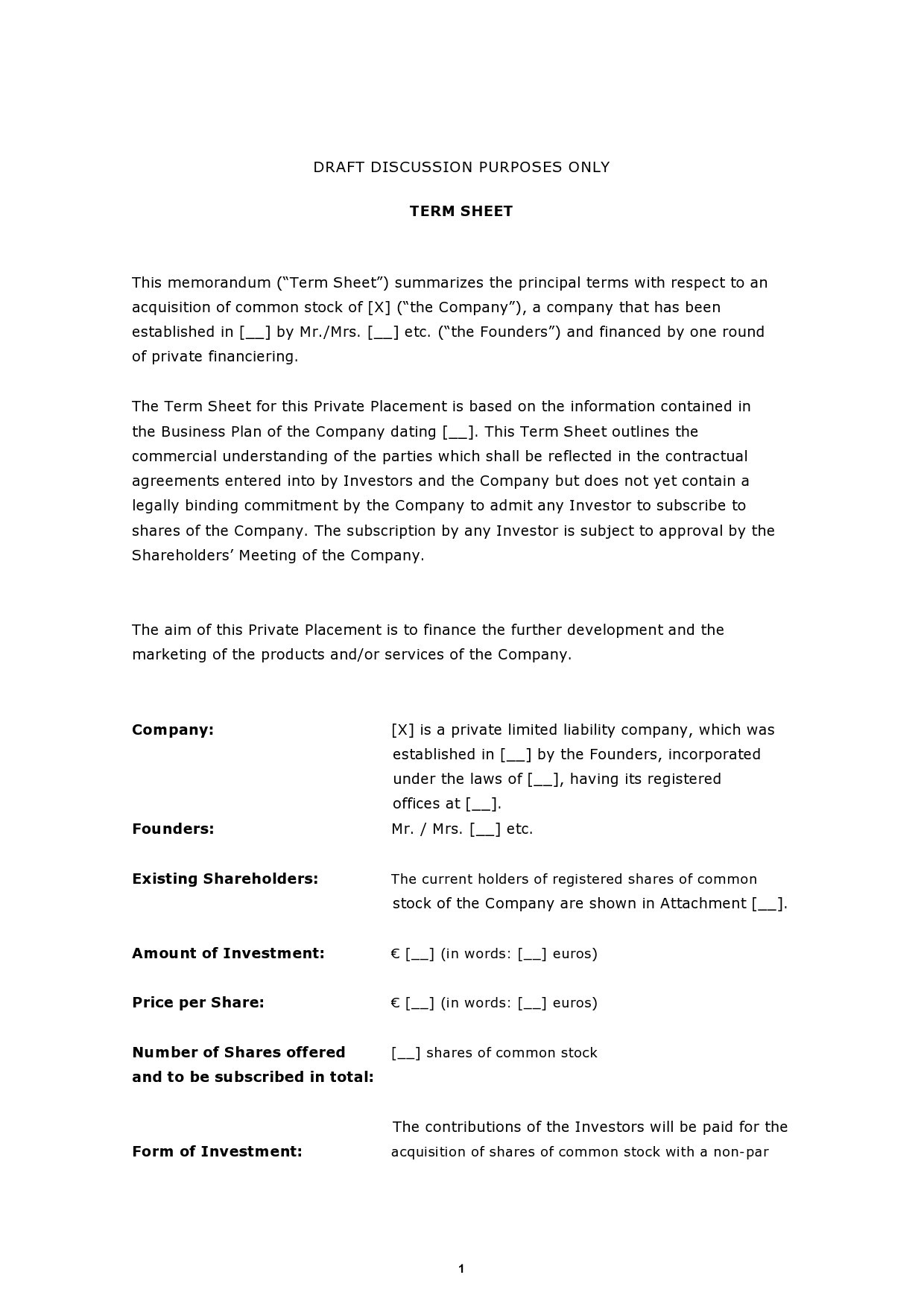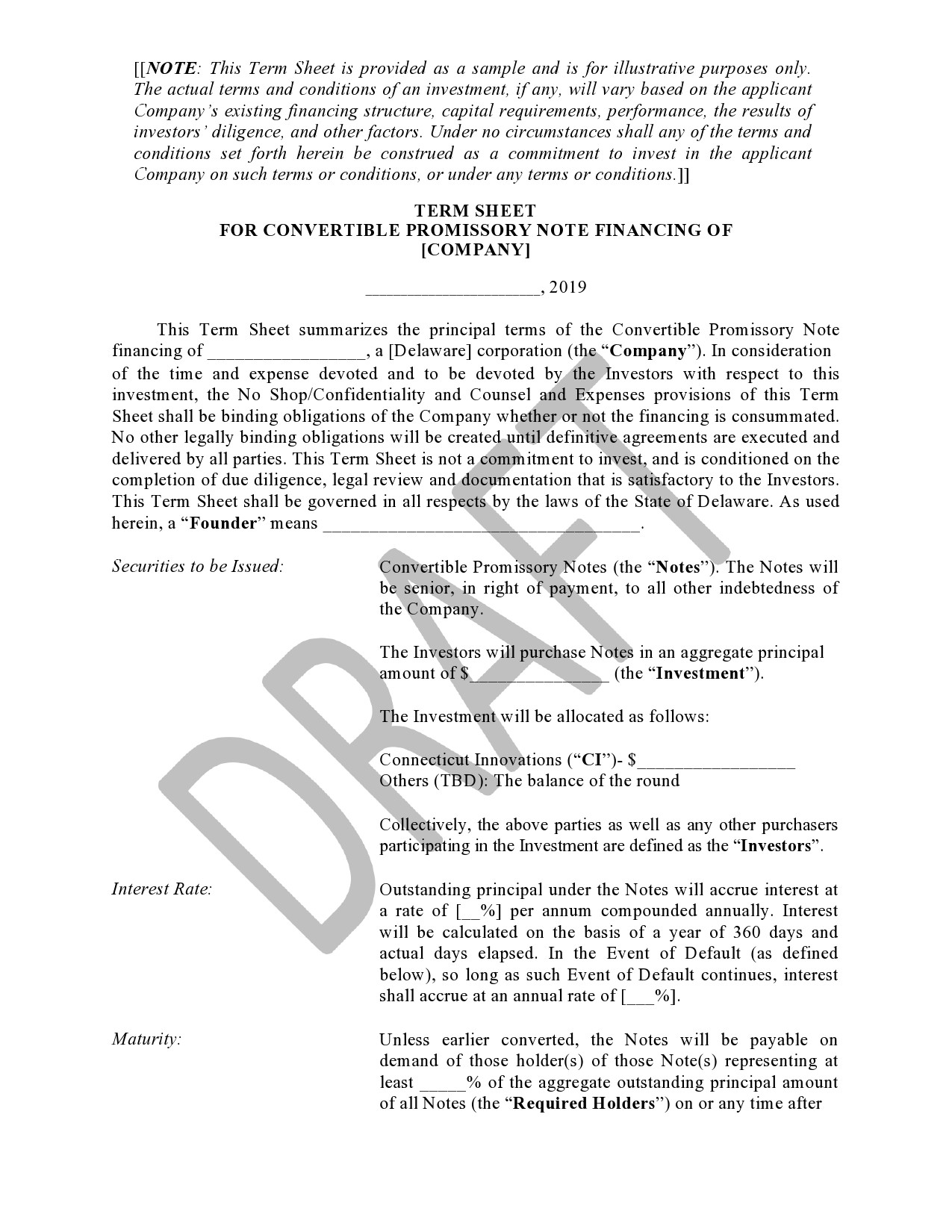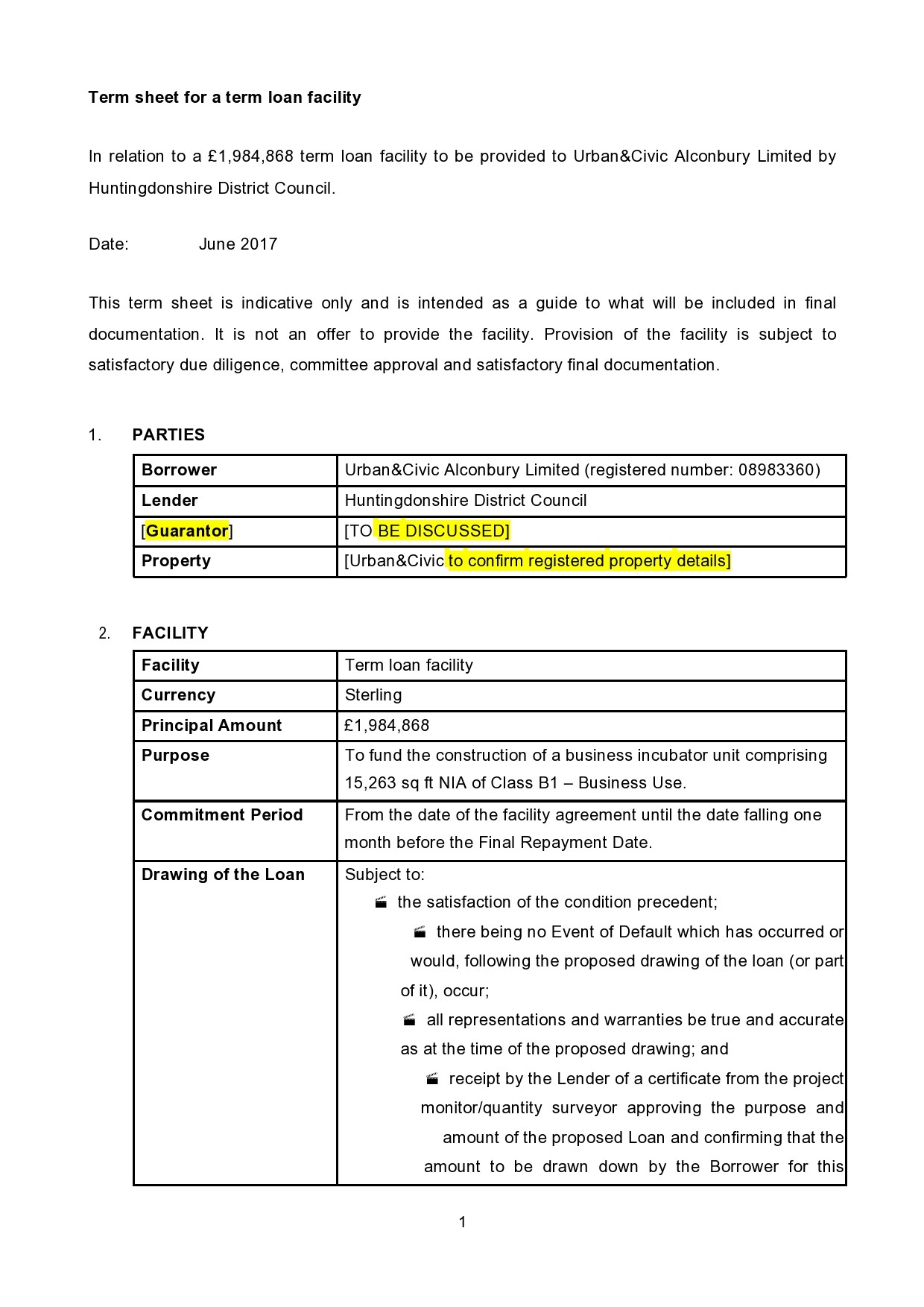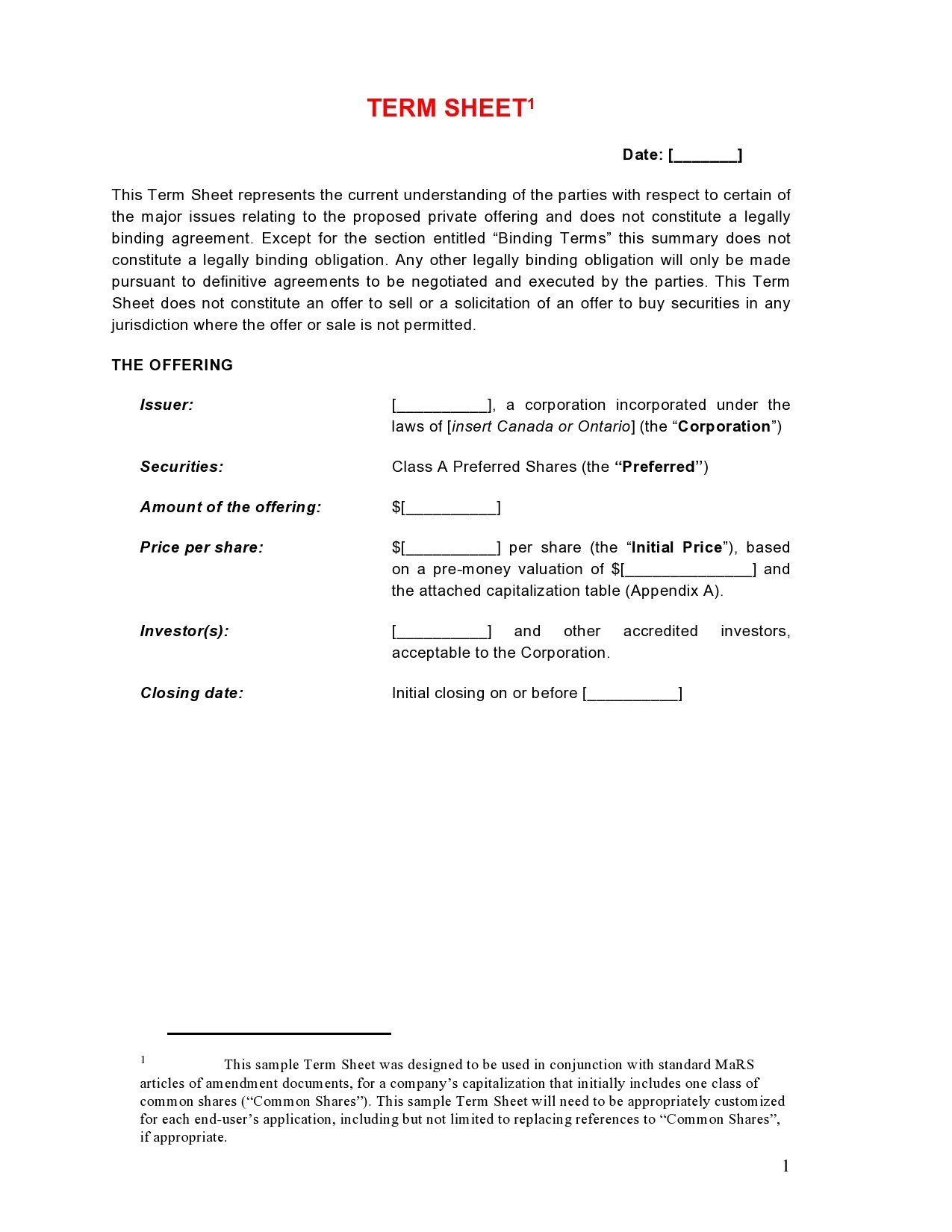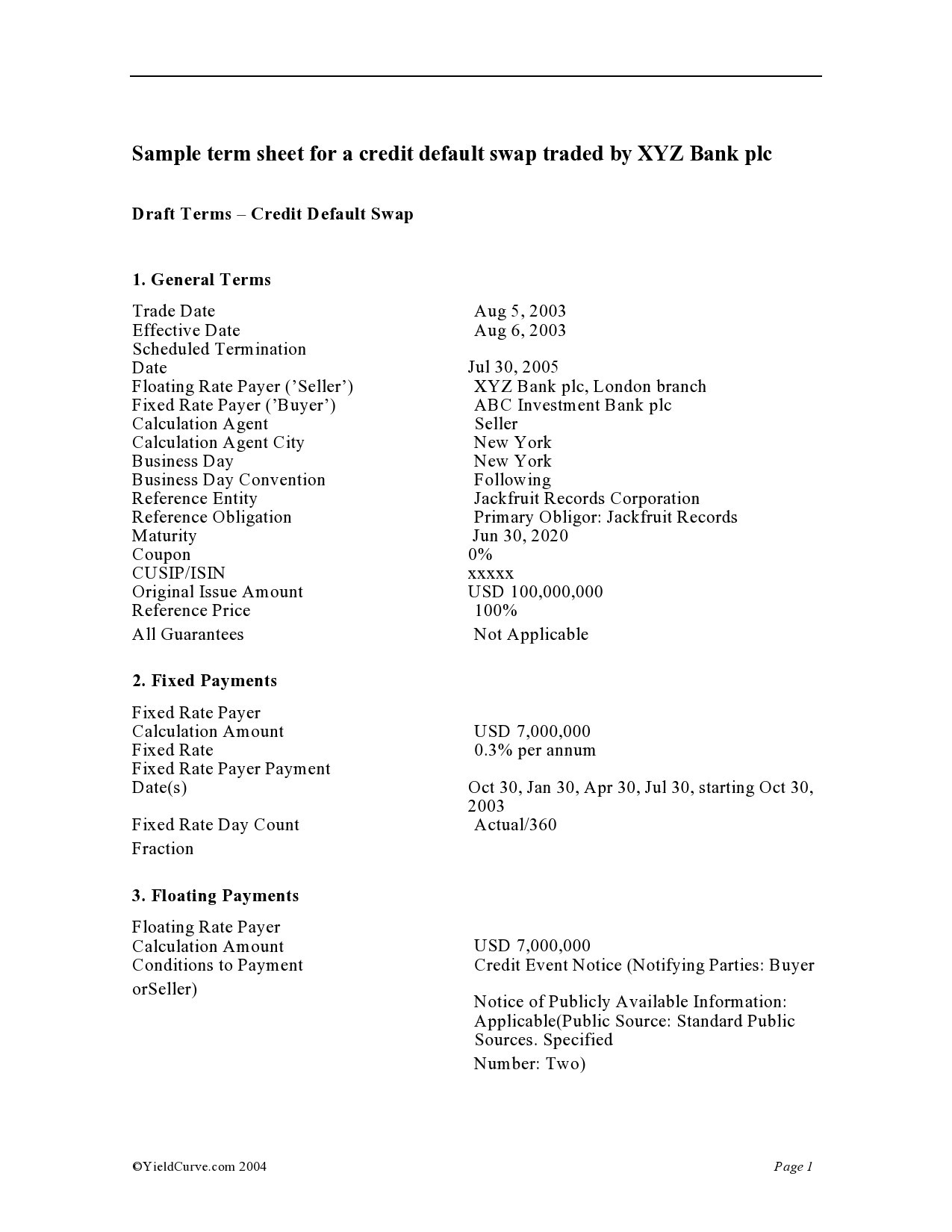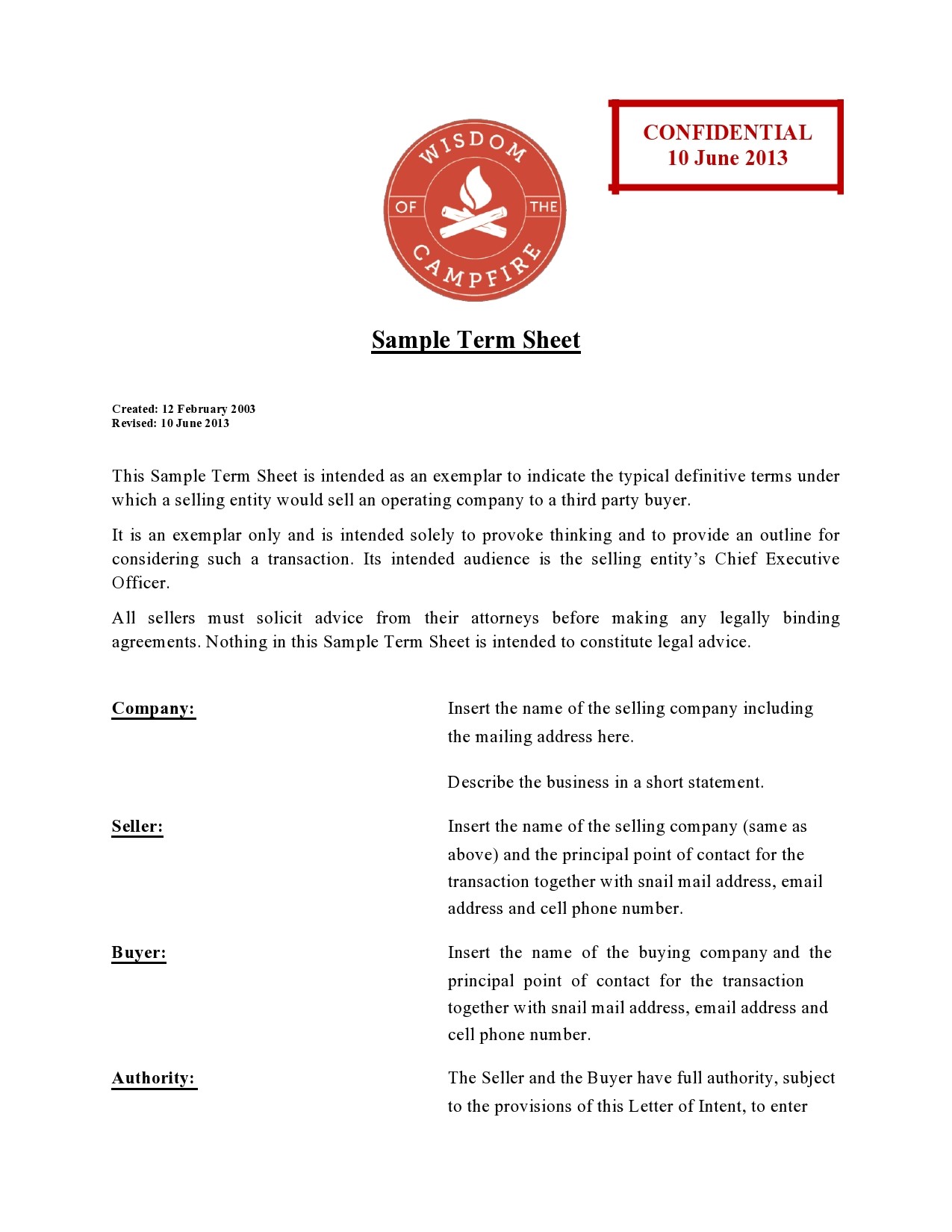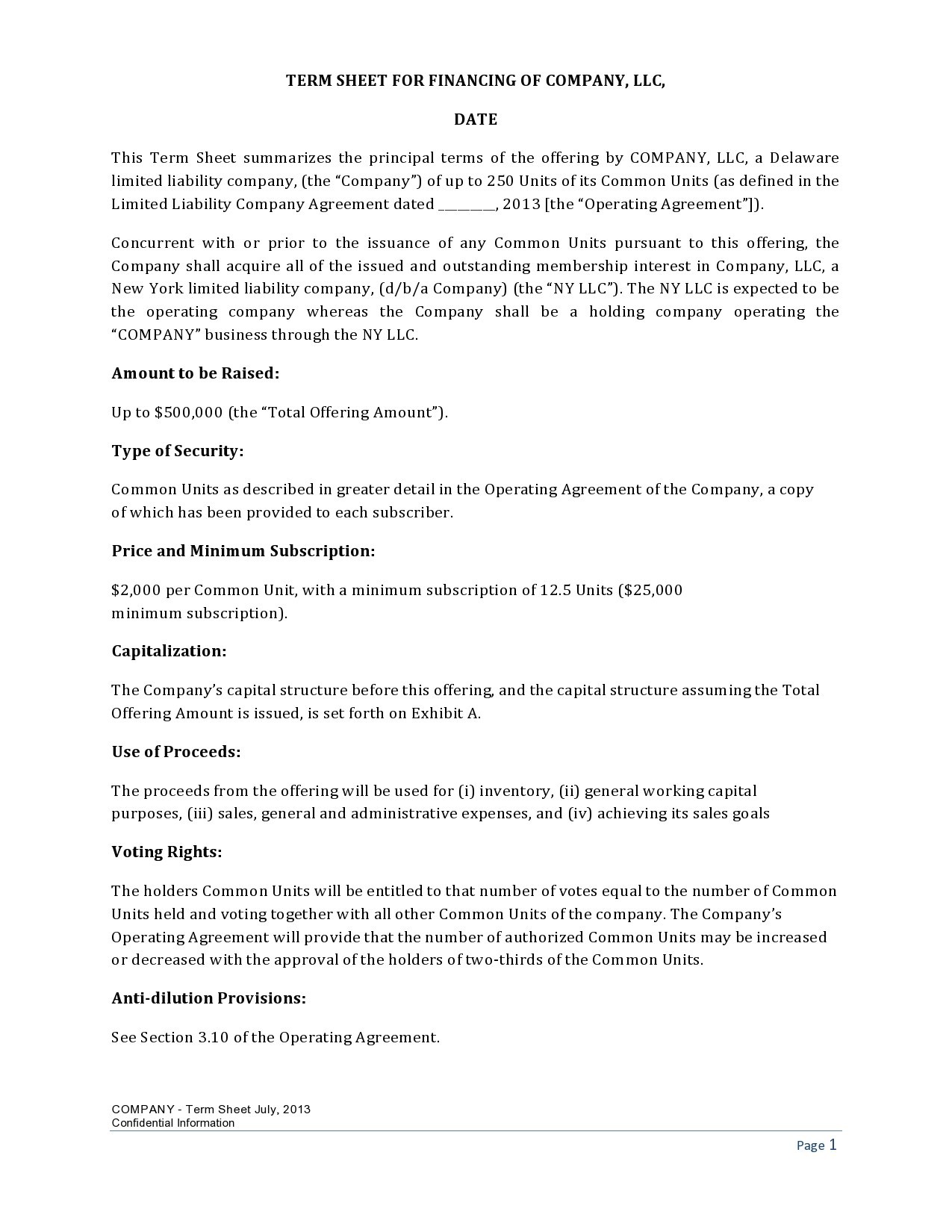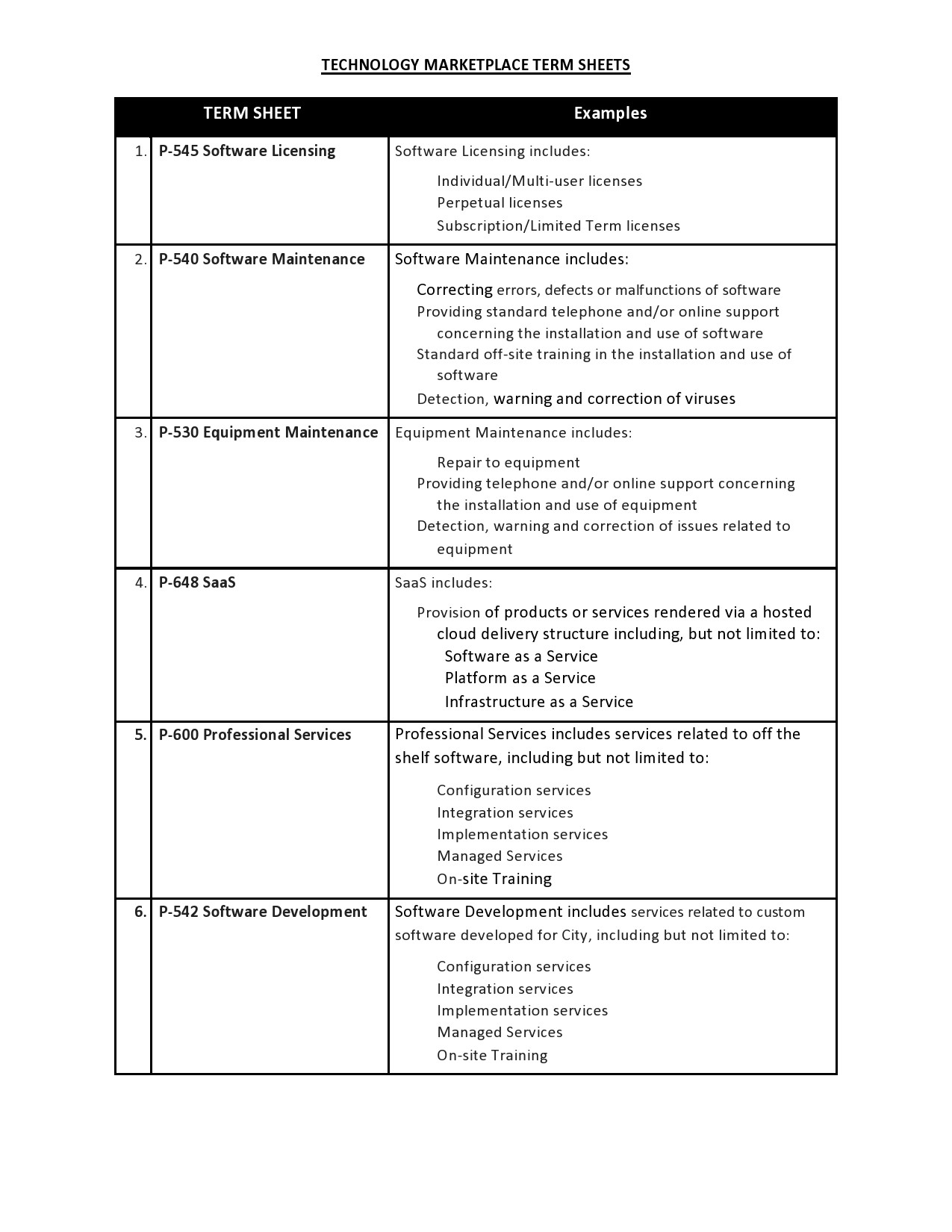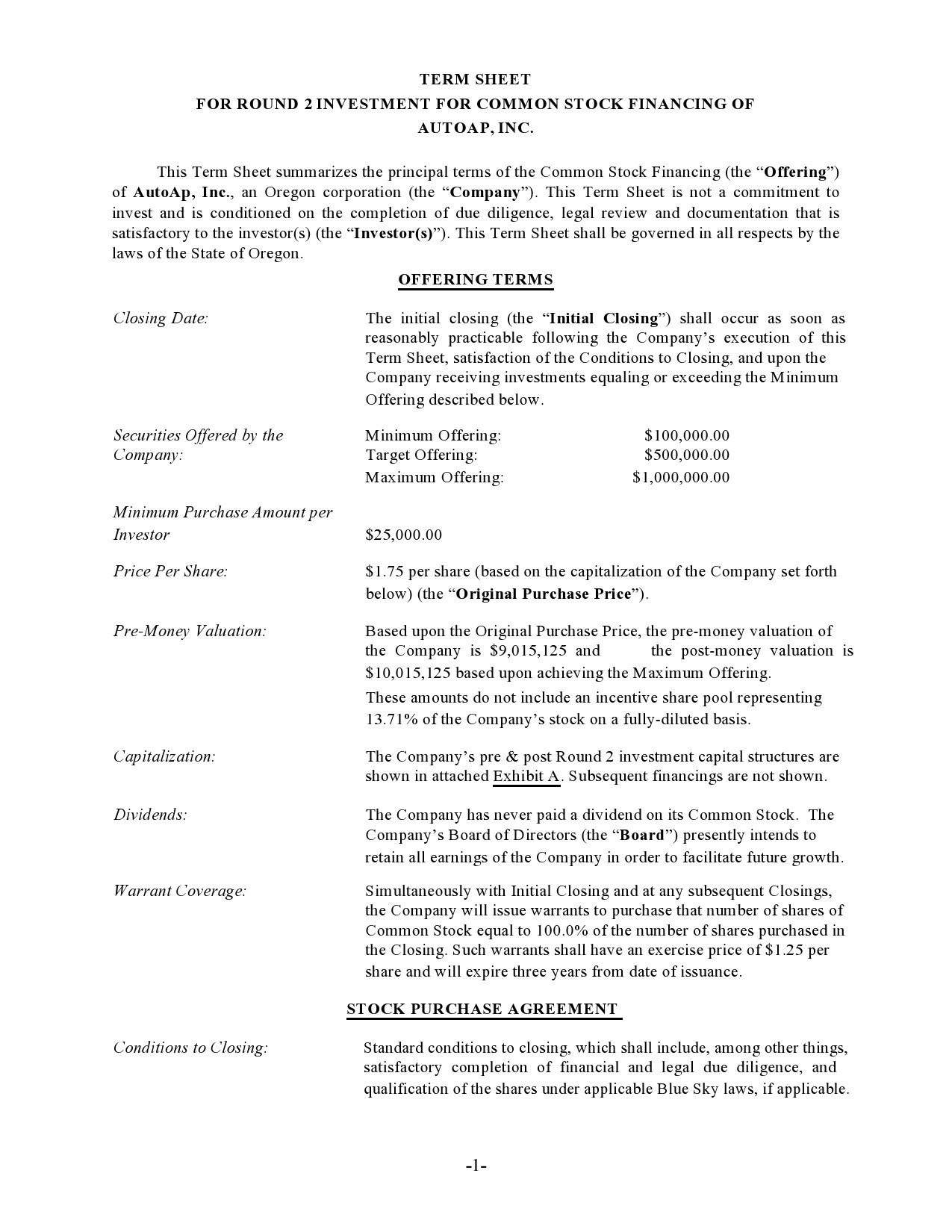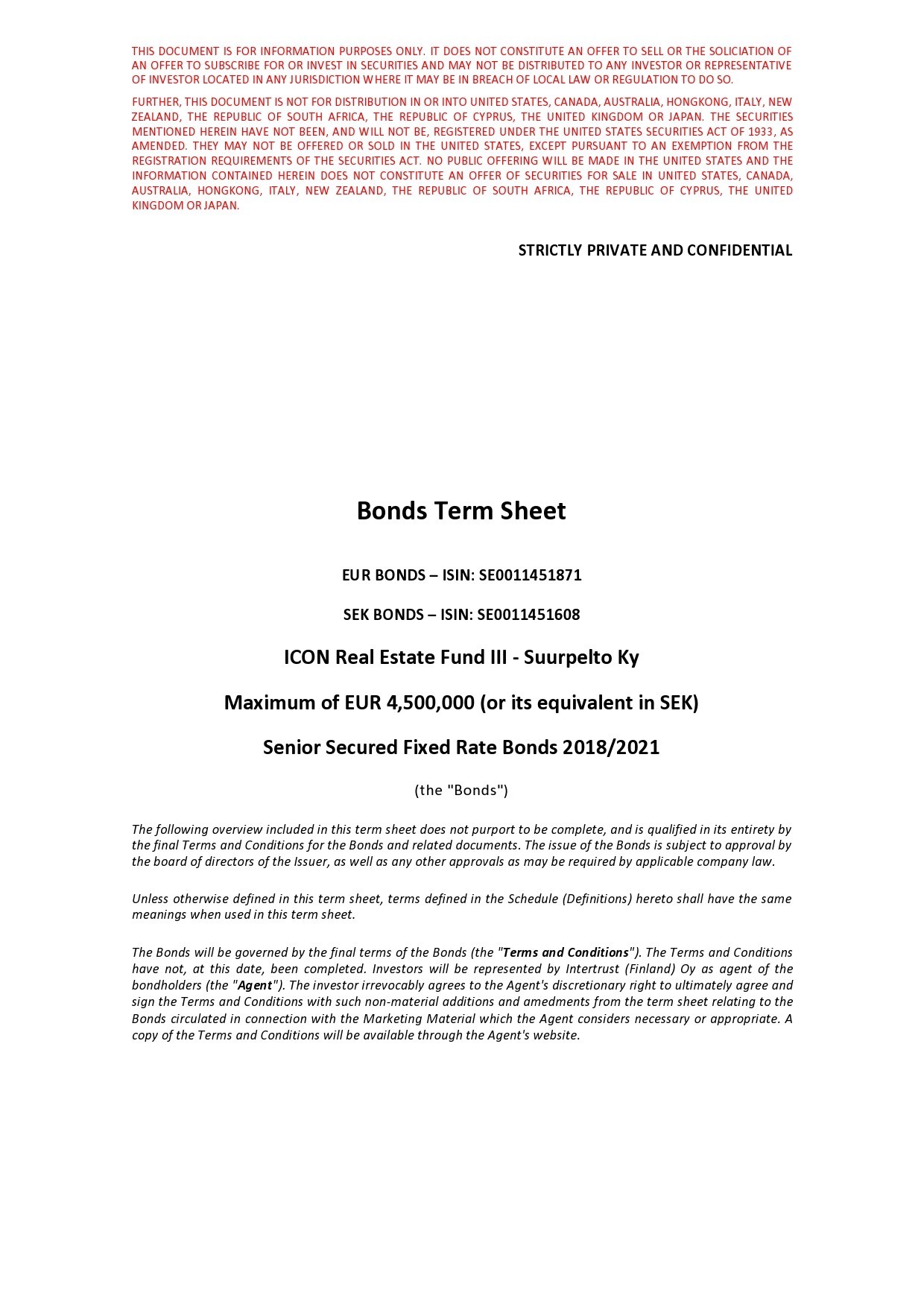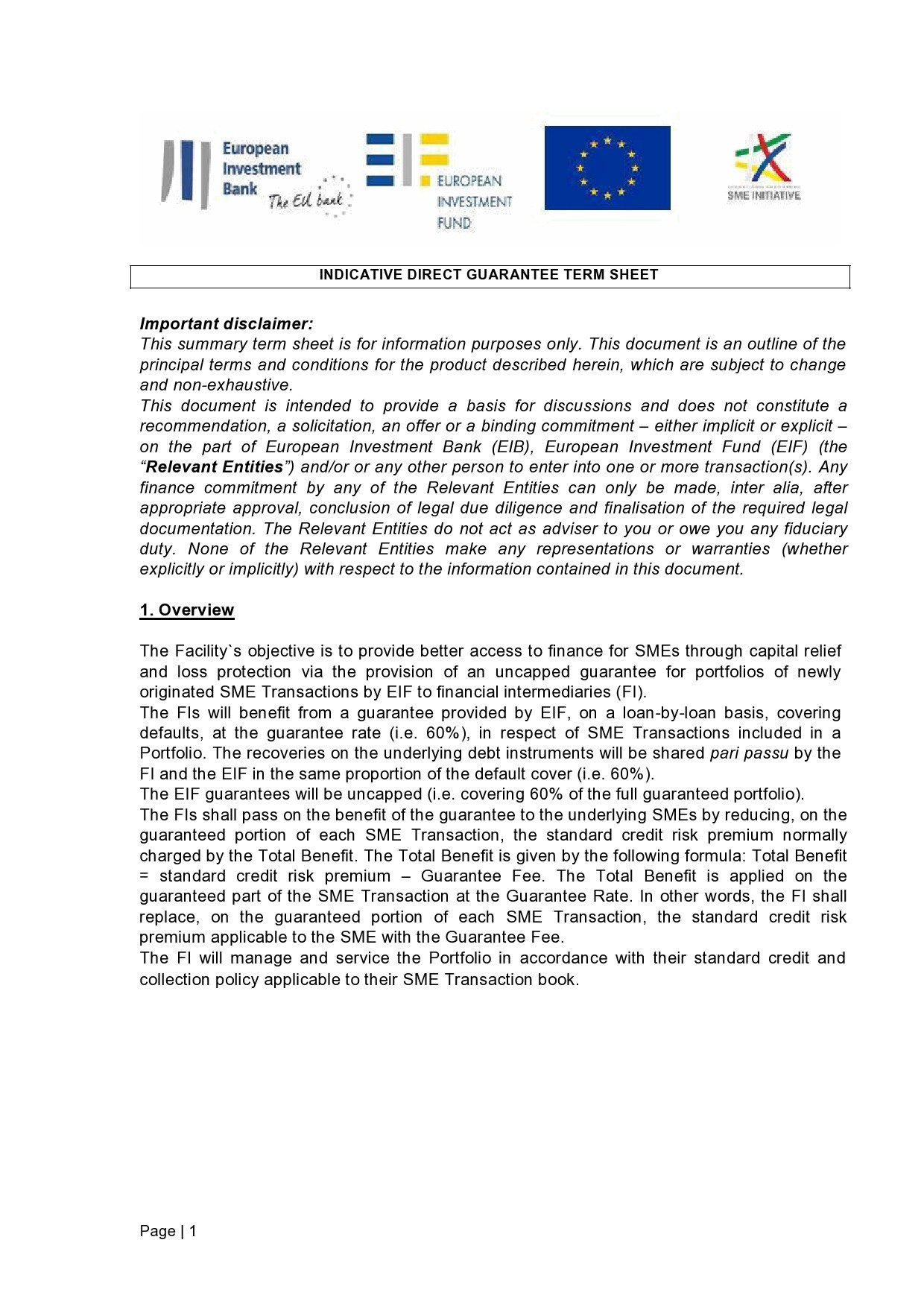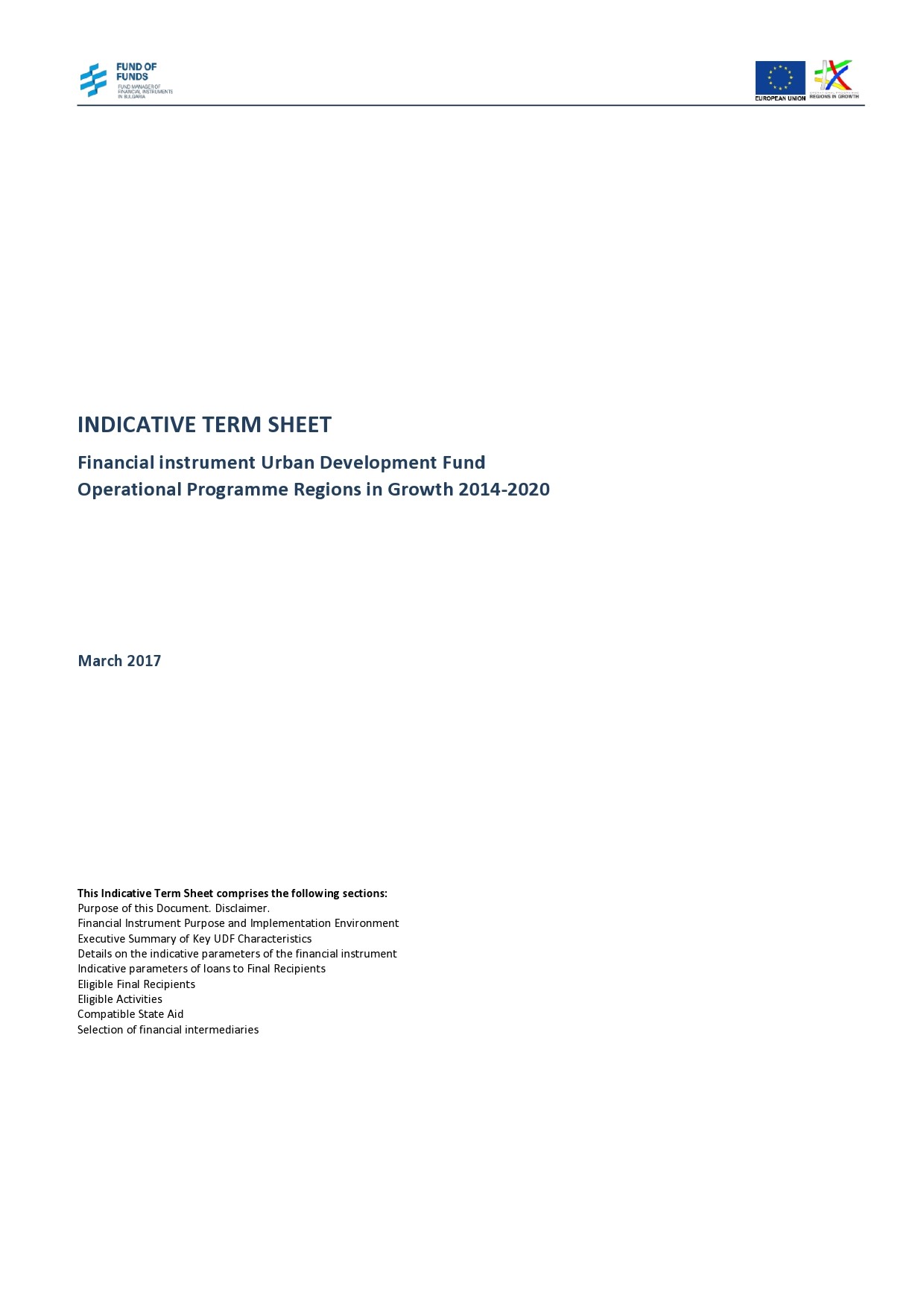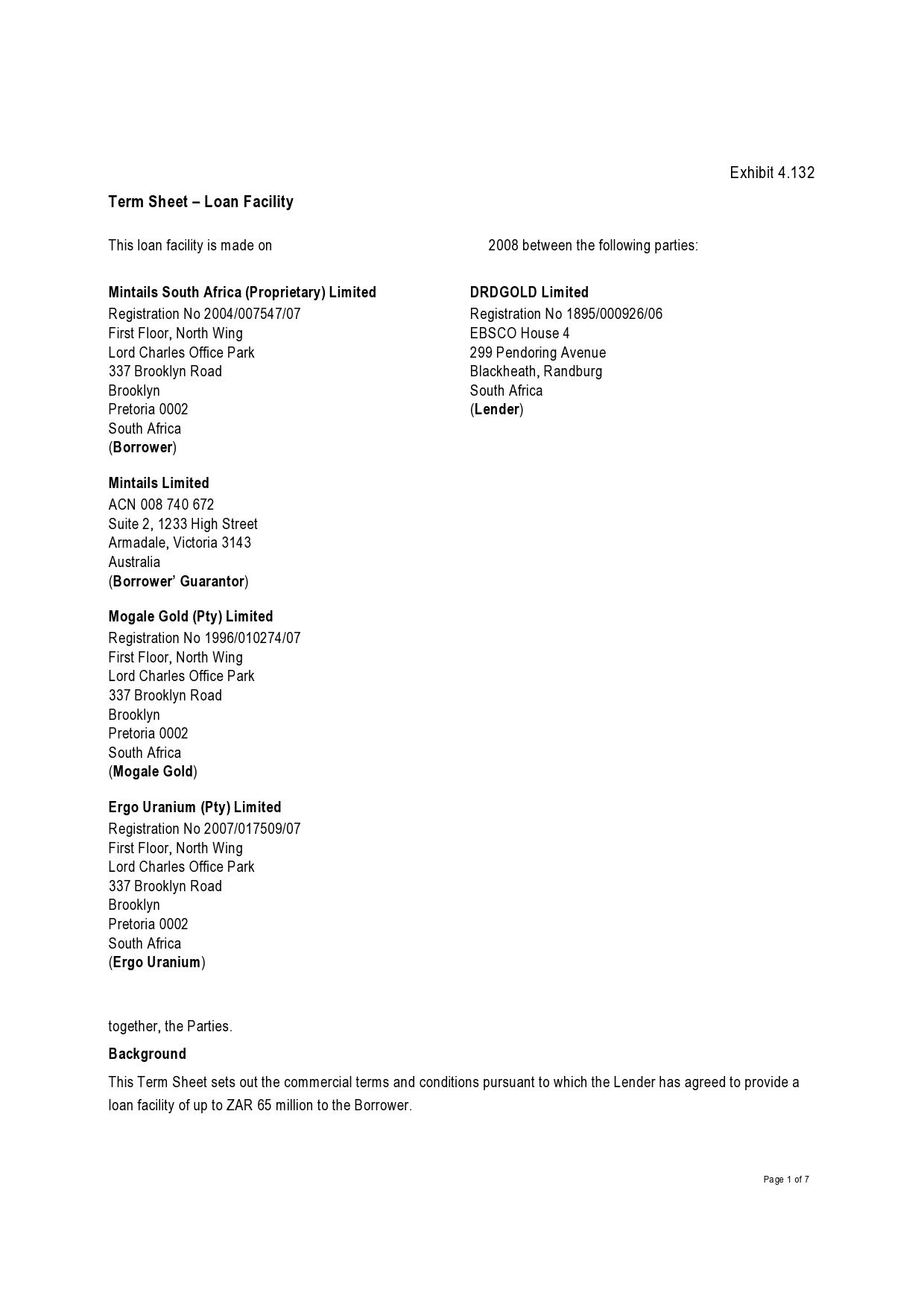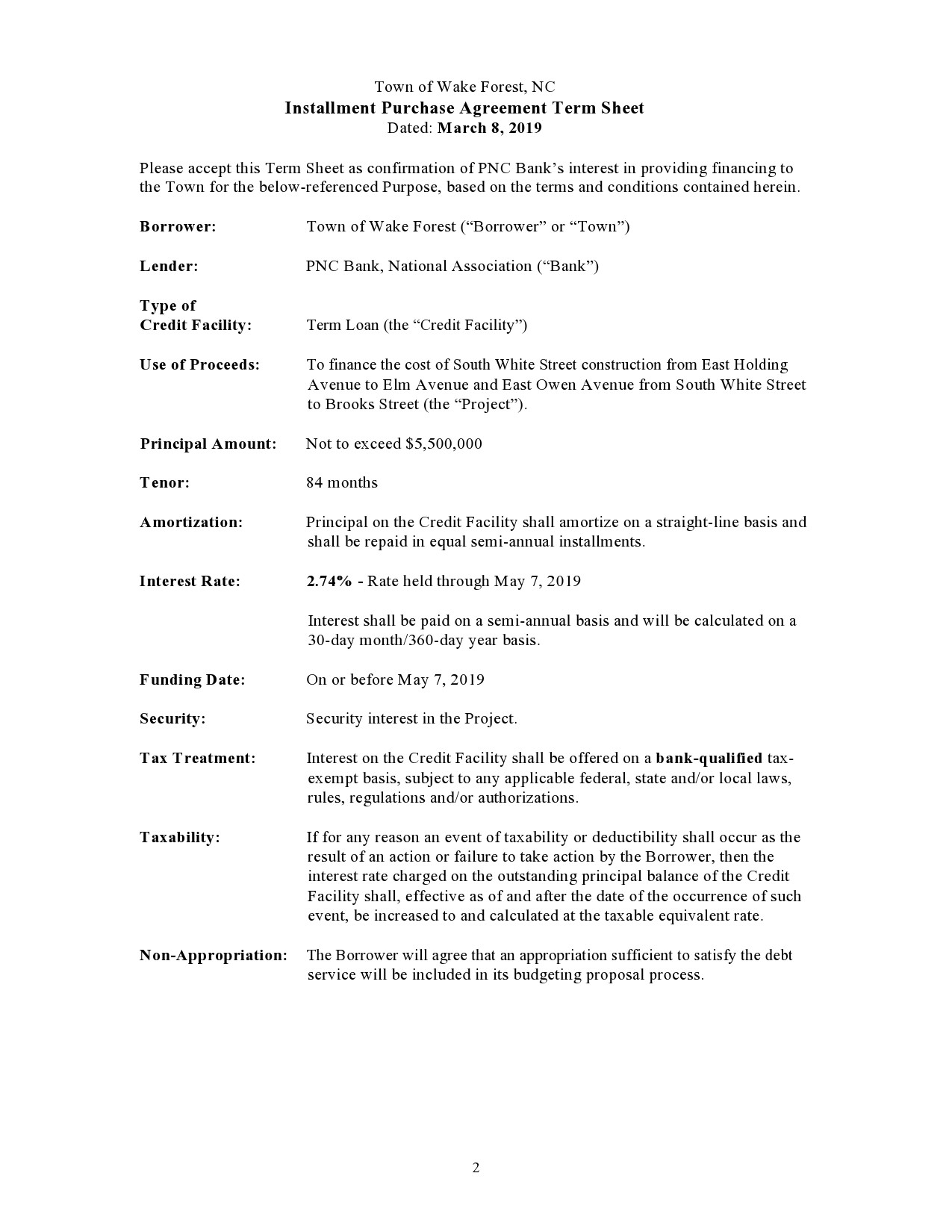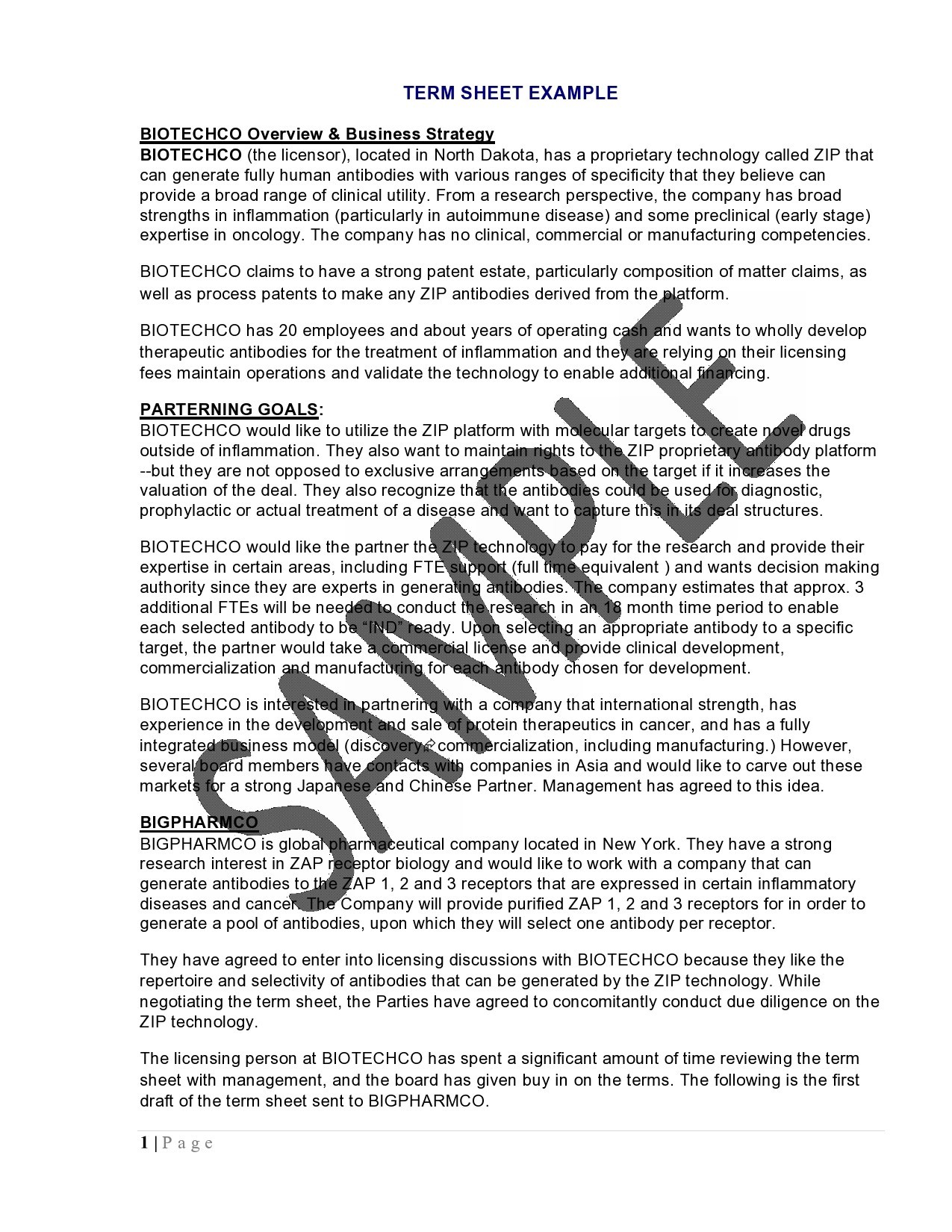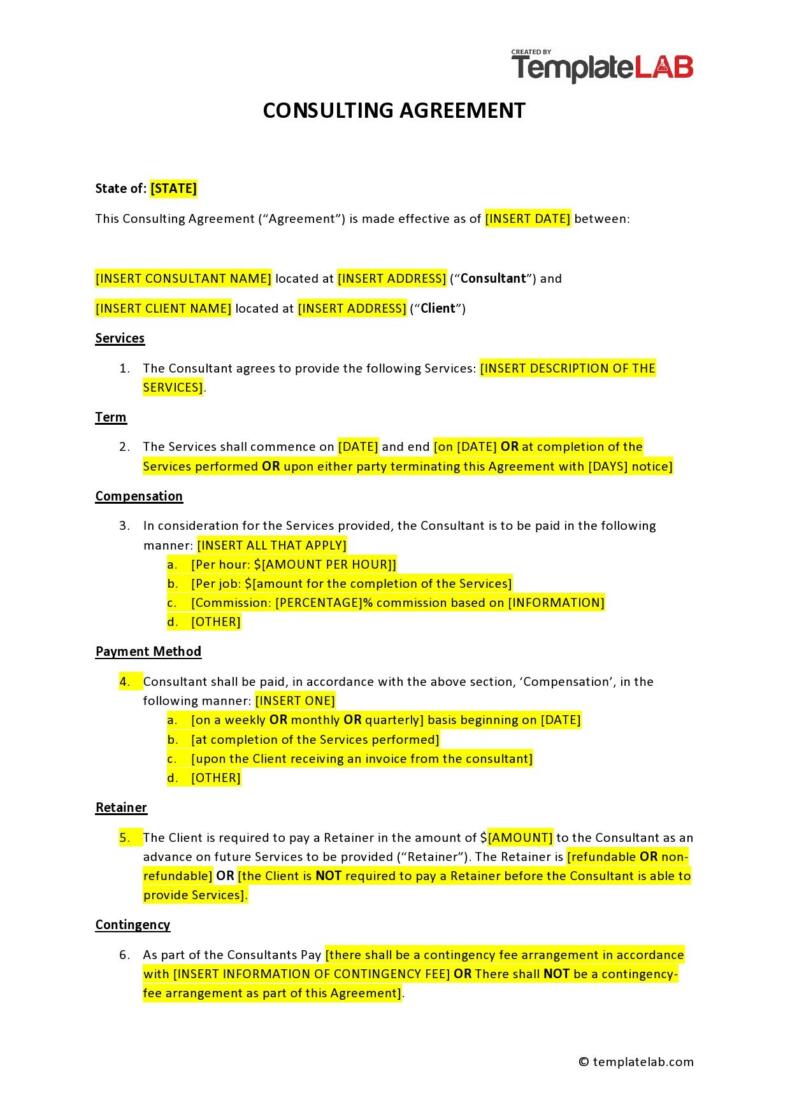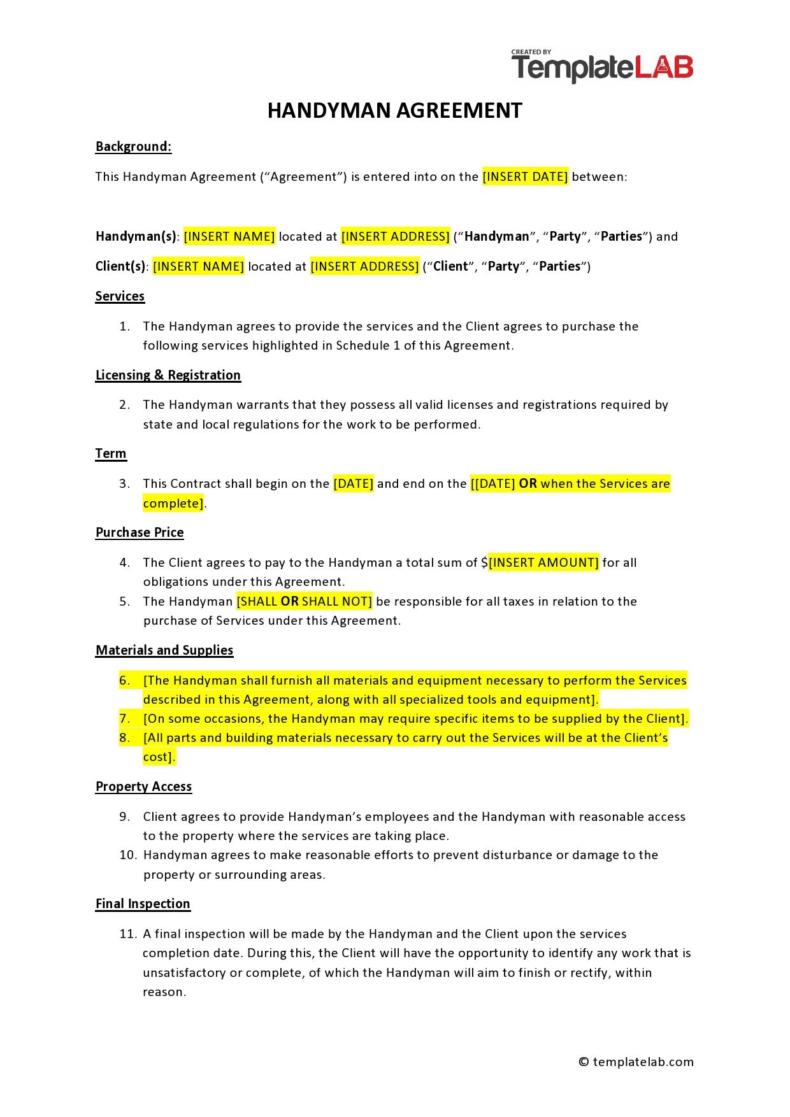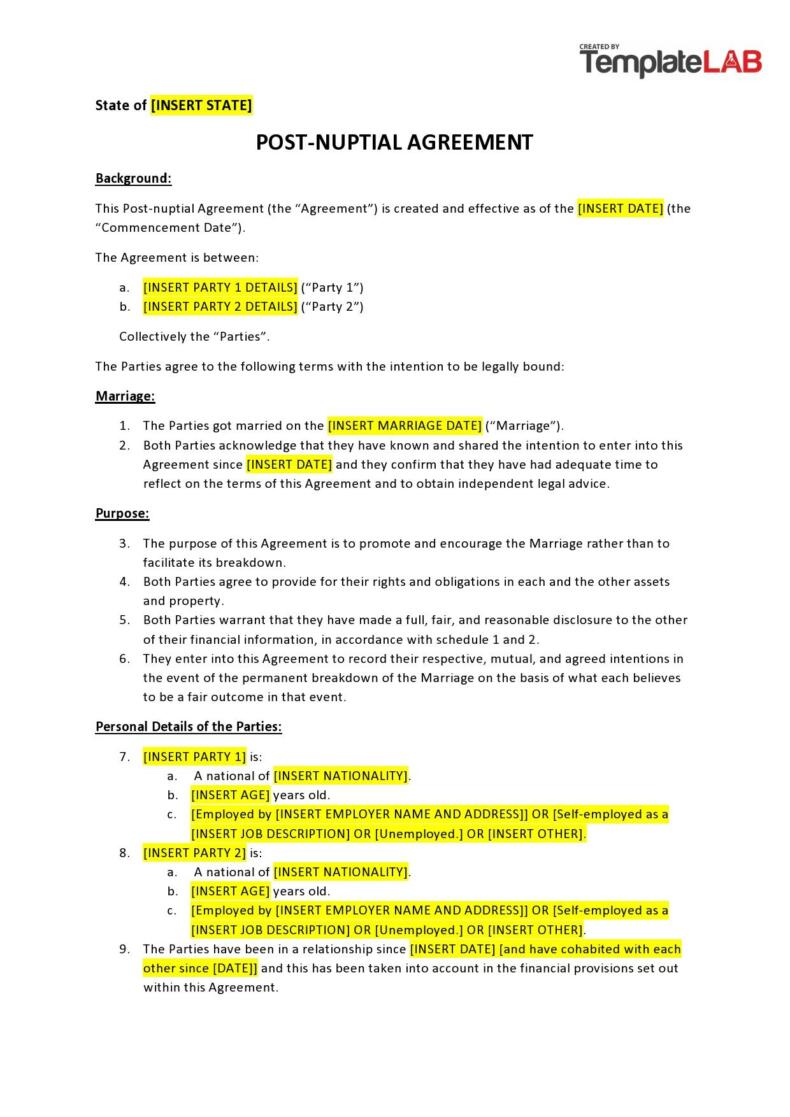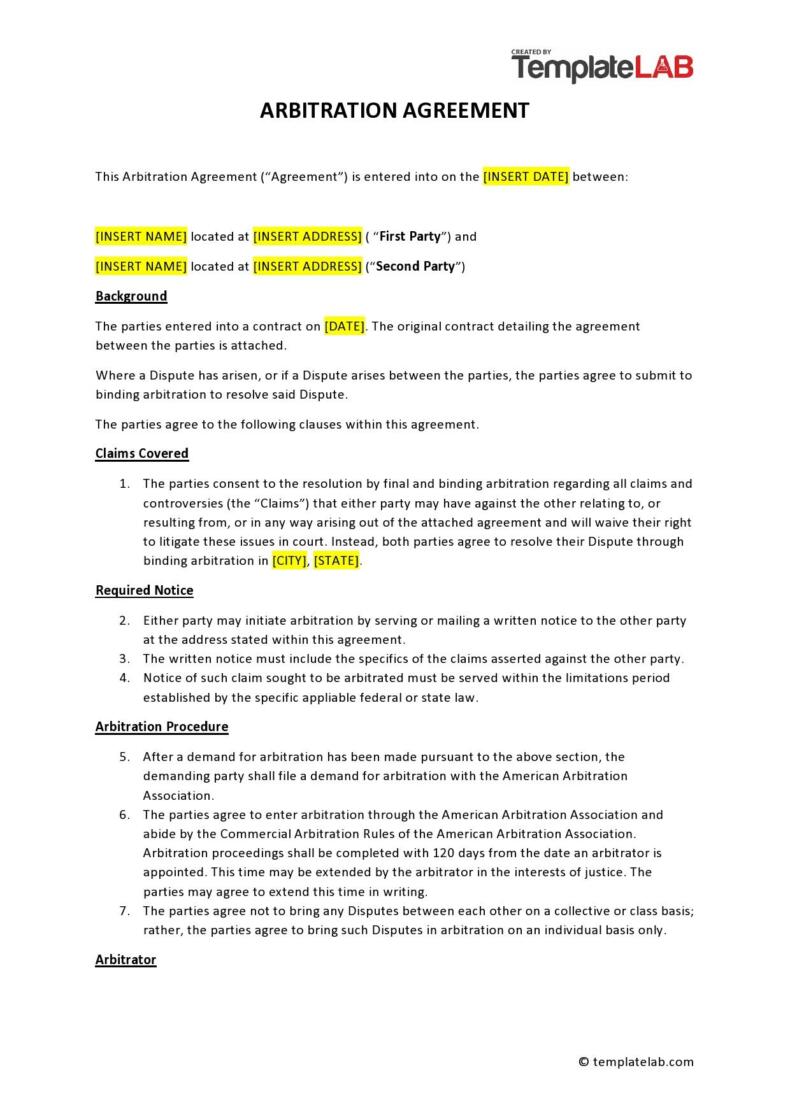When two entities would engage in an agreement and they can create a term sheet template to kick start the process. This document contains the fundamental terms and conditions of the investment opportunity they want to enter and it serves as a starting point for creating agreements with more complex details. Investment bankers often use a term or offer sheet template on behalf of corporate issuers.
Table of Contents
Term Sheet Templates
What is a term sheet?
A term sheet is a document parties exchange that contains the terms and conditions of their agreement. It is a summary of the key points in the agreement and it sorts out any differences before any actual legal agreements get executed. A term sheet is “non-binding,” meaning that the parties are not legally obligated to carry out its terms.
It simply reflects the broad and key points between the parties involved under which they will make an investment. You can also use a term sheet example for the external or in-house legal teams who will draft the definitive agreements. Term sheet clauses and contents vary from one transaction to another.
Term Sheet Examples
Why do you need a term sheet?
Both the founders and investors know the importance of sample term sheets. It’s always recommended to ask for legal advice before signing one. Generally, term sheets should:
- Encourage both parties to concentrate on the fundamental problems in the agreement at the earliest possible time.
- Allow both parties to settle any problems or misunderstandings.
- Allow both parties to settle the key principles in the agreement. Then you can use the term sheet example as a framework for creating a legally-binding document that is more complex.
- Define the conditions which either party must satisfy first before entering into a binding agreement.
- Provide a comprehensive outline of the whole process to ensure due diligence.
- Establish any binding aspects which the parties have previously agreed upon.
Sample Term Sheets
What is included in a term sheet?
Most entrepreneurs consider a term sheet template as one of the most important documents to create or sign. The terms you set here will dictate what happens for the next steps. But how do you go about creating a term sheet? Sad to say, creating a sample term sheet isn’t taught in schools.
With so many tasks involved in designing one, even entrepreneurs can reach this point and still barely have an understanding of what term sheets look like, what they are, and how to make one. But it’s always an advantage to get ahead of the game.
From the beginning, you should already have terms in your mind then work strategically to ensure the best possible outcome of negotiations even before pitching your idea or seeing a return in your investment. There are several varieties of term sheet templates available today.
If you want to learn how to make one, master the type you plan to use. Following are the most common clauses, factors, and terms to include in your term sheet template:
- Details about the parties involved and the agreement
The main section of a term sheet lays out the various venture capital firms or angles that will participate in the agreement, how much they’re willing to invest, and the price they of each share. It involves all of the ownership and valuation percentages.
Although picking the best investors is key, it’s always prudent to create documents in your favor as much as possible in case these investors aren’t exactly the people you initially believed them to be.
Think broader and further into the future because these investors will surely do the same. This especially applies to convertible debt and what you will base your valuation figures on later. - Option Pools
Set aside a pool of shares that you will make available for your future investors and employees. This may not seem important now but it can have an impact on valuation and factor into the dilution of shares. Being a founding member, you don’t want to soak up all the effects of dilution. Your investors must experience the same to make things fair. - Liquidation and Participation
This clause in the term sheet template defines how much preferred stockholders and investors should receive before everyone else should the company get sold. Preferred stockholders who have participation rights may also get entitled to a percentage of the proceeds in an exit aside from their return of investments. - Dividends
Dividends can be either accrued or not. If accrued from the very beginning, the money will get added to the share of the investor’s proceeds in a sale. But be very careful here in terms of who gets the right to make demands when dividend payouts come. - Protective Provisions
One of the most significant protective provisions in a term sheet is the inclusion of an anti-dilution clause. Just make sure that you understand the rights to dilute stocks and the method of calculation used. - Controlling Rights
There is a high likelihood that you will have a set number of board appointments and seats or ownership percentages for classes of voting shares. The main issue here is whether the majority of these shares or seats belong to investors, members or shareholders. Like in most corporations, the majority dictates who will make decisions and decides whether employees keep their jobs or lose them.
You shouldn’t yield away too much power but you should also know that too much voting power can become a major issue for potential or future investors. In an ideal situation, you will hold enough power to keep your vision and values protected while still encouraging the entry of maximum investments from reliable participants.
Offer Sheet Templates
What is a term sheet in M&A?
In typical M&A transactions, the initial step is for a target and buyer to affix their signatures on a term sheet. This document contains an overview of some of the main terms and conditions that are often present in an M&A transaction.
As mentioned earlier, a term sheet is a non-binding document signed by the prospective buyer and the target. It contains a description of the most important terms of the proposed agreement. Although most term sheets are non-binding, some of them include binding elements regarding non-solicitation, confidentiality, and exclusivity.
Aside from the purchase price, several deal terms can also affect the certainty and timing of post-closing and closing matters. These can ultimately determine the amount and the time when you receive proceeds along with your risk exposure. Since you would typically negotiate these at the beginning while creating your term, renegotiation might not be a possibility later on.
The parties involved may spend a lot of money and effort in negotiating a definitive agreement and other relevant documents and as such, having a summary of the major points can ensure that both parties have agreed on these terms before proceeding. The term sheet template can provide instructions to the draft persons, advisors, and counsels on what documents to draft.
What is the difference between an LOI and term sheet?
Sample term sheets are typically needed for negotiations between an entrepreneur and a venture capitalist. They primarily serve as the basis for negotiations. Once you close the deal, the terms of the deal reached will be very similar to the ones on your term sheet.
On the other hand, a letter of intent (LOI) is typically used for negotiations in an acquisition or a merger. Upon the completion of negotiations, the due diligence begins. The terms of negotiations remain in place unless:
- The buyer discovers that the company isn’t as profitable as it was initially perceived.
- You found out something detrimental like an on-going issue within the company.
Should you find something, then you can re-enter into negotiation before closing the deal. If the issue you discover is a major one, you might walk away from the agreement completely. Let’s differentiate these documents further by defining them:
- Term Sheet
A term sheet is a non-binding document, a buyer’s expression of interest that outlines the structure and price of the transaction. You can also use it for larger transactions with more sophisticated parties and where the business gets marketed without a price.
One of its main functions is to determine if both parties are in agreement with the transaction’s structure and price before they invest a significant amount of money and time on it. Assuming that they’re in agreement, the buyer can either submit a PA or a Letter of Intent. Depending on what it contains, the term sheet is usually 1 to 5 pages long. - Letter of Intent (LOI)
This document is commonly used in more complex, larger transactions. Like a term sheet, a Letter of Intent also specifies the terms of the agreement but with more details. Unlike a term sheet, the parts of an LOI may be legally binding including confidentiality, exclusivity, and more.
Drafting of LOIs involve transaction lawyers for the simple reason that there may be some traps for those who don’t completely understand LOIs. After an LOI has been fully executed, obtaining financing and due diligence become serious as the lawyers start creating the APA. A Letter of Intent is typically between 3 to 15 pages long.

